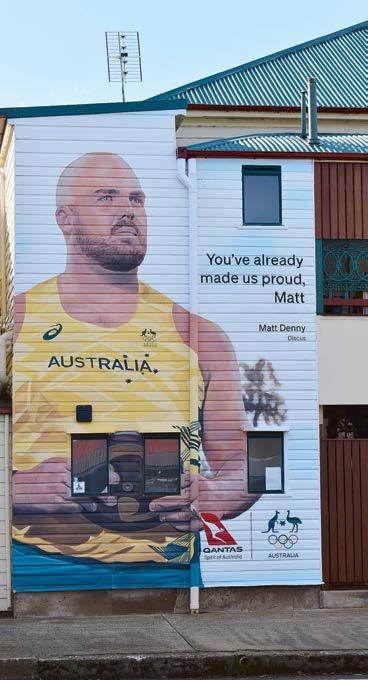
















Groundbreaking innovations that will shape the future of sustainable farming practices in Australia’s agricultural sector were showcased at last month’s PURE Trial Farm Field Day.
A prominent mix of more than 300 industry members, farmers, agronomists, partners and stakeholders took the unique opportunity to see commercial-scale sustainable practices in action at Boolah Farms in Pallamallawa, NSW, just east of Moree.
The focus was on innovative regenerative



techniques and carbon sequestration strategies being trialled at Australia’s largest commercialscale trial farm.
Boolah managing director and founder Stuart Tighe said it was a “privilege“ to welcome such a diverse group to the PURE Trial Farm Field Day.
“What stood out most were the invaluable conversations happening throughout the day,“ he said. “These discussions, where perspectives are shared and solutions are explored, are where real progress begins.
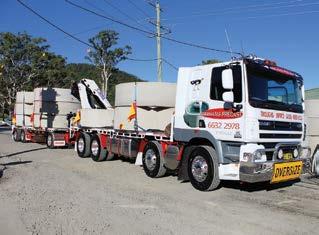

“We are particularly proud of the progress made over the past two years at the trial farm. The work we’ve done here enhances supply chain value while improving traceability and validation for end-users.
“This event was a chance to share our knowledge with the broader community and show how sustainable practices can be both innovative and practical.”
PAGES 2-3
N80 (P), a sire purchased by Bullamakinka for $82,500 in 2018. U50 boasts an eye muscle area of 137sq cm, scrotal circumference of 45cm and 92 per cent semen morphology.
A ‘grain detective’ optimising quality assessments, a platform eliminating paperwork for farmers and soil treatments that increase nitrogen in a natural way cultivated plenty of discussion at an agtech event in Toowoomba.
These innovations were among the groundbreaking solutions for the grains sector that featured at the GRDC GroundUp Agtech Showcase Day on Thursday, 29 August.
Held at the Agtech and Logistics Hub in Wellcamp, the event saw more than 150 people immerse themselves in a vast range of innovations, including producers, processors, resellers, investors and businesses interested in the Australian grains sector.

Kristina Hermanson, Nuveen Natural Capital
“In my career across agriculture I’ve been involved in a lot of trials and I think what Boolah is doing here with the large scale trials is really unique. I love the conversations with everyone here and working out how we can do things more sustainably.”
Ruby Earsman, Terra Firma Fertilisers
“The Boolah Trial Farm is unlike anything that’s out there, it’s very large scale and the independent testing is unique and very reputable.“
Lee Coleman, FarmSimple
“Today, I’m really excited to hear about the successes, especially how growers continue to improve and achieve that extra two or three per cent.“
Peter Birch, B&W Rural
“If we look ahead to the future, we’re all on the same page, trying to figure out the best way forward. The biggest takeaway from today is that there are many different approaches now – the old days of just one method are gone.“
Sam Simons, Poole Ag Consulting (Boolah Agronomist)
“I think it was great to see the amount of industry partners collaborating together, working towards the same goal, investigating how we can do things better and more sustainably into the future.“
Pip Grant, Riverine Plains
“It’s just so great to see so many commerciallyready products being trialled at scale to give farmers confidence in actually adopting these products and actually seeing some of the newer and emerging technologies that are being pres-
sure tested in a full-freight environment. I think that’s a really important part of how Boolah run their trials. They’re actually giving a commercial perspective - so factoring in and crunching the numbers - not just for year-on-year trials, but at scale in real world conditions.“
Emma Turner, Swanbrook Agriculture, Inverell
“It’s been fantastic to follow the story of the Tighe family for many years and to see this amazing network they have brought together today. The field day has been great for showing the products that are out there - from a producer side of things, particularly from a grazing enterprise perspective. It’s been good to really understand what inputs are available on the cropping side of things to improve some of the carbon fixing and nutrients.“
Oscar Pearse, farmer, Pallamallawa and director of NSW Farmers Association
“Boolah is an immaculately run farm and their trials here are a step above anything else you can find around here. Large scale, repeated trials over time - that’s how you prove this kind of stuff works.“
David Engel, regional head of Raw Material Procurement at Asahi Beverages, Melbourn
“I loved being out here today. Often, I’m sitting in an office in Melbourne and can feel disconnected from what’s actually happening on the ground. What excited me most today was seeing a lot of innovative thinking. While not everything may end up commercially viable, it’s inspiring to witness people approaching things differently and thinking outside the box.“
The “steaks“ will again be high at the seventh running of the Toowoomba and Surat Basin Enterprise (TSBE) Darling Downs Beef Battle on 3 October in Toowoomba.
The “battle“ is a night where the region’s beef brands go head-to-head for the prestigious title of the Darling Downs Best Beef. It is also a chance for the industry to gather, acknowledge and celebrate.
In 2023, the region’s best beef brands - Australian Country Choice, Grove Shorthorns,JBS,JohnDee,Mort&Co,NHFoods, Rangers Valley, Stanbroke and Stockyardwent head-to-head, showcasing their superb product to more than 500 attendees.
The winner of last year’s Darling Downs Beef Battle was Stockyard, while the winner of the Darling Downs Beef Battle Peoples’ Choice was Stanbroke.
TSBE’s former CEO Greg Bowden said then the competition was a “fantastic“ celebration of Darling Downs Beef and a wonderful opportunity for the industry to applaud our leading grain-fed brands.
“This event propels our producers’ hard work beyond their gates, placing it on the map and on the plates of national and international buyers, acclaimed culinary authorities and red meat enthusiasts.”
The 2024 competition will once again have two categories awarded on the night.
An exclusive panel of judges will scrutinise the Darling Downs Beef Battle winner, while more than 500 guests will judge the Darling Downs Beef Battle People’s Choice award on the night.
- Fiona Gowers

Address: 154-156 Haly Street
Kingaroy 4610
Telephone: 07 4182 0450
Website: QueenslandFarmerToday.com.au
CONTACT US
Editorial:
Email: newsdesk@QueenslandFarmerToday.com.au
Advertising:
Email: advertising@QueenslandFarmerToday.com.au
Classifieds:
Phone: 07 4182 0450 or 1300 666 808
Email: sales@networkclassifieds.com.au
EDITORIAL
Fiona Gowers Editor
E: fiona.gowers@QueenslandFarmerToday.com.au
Breanna Lloyd Journalist
E: breanna.lloyd@QueenslandFarmerToday.com.au
ADVERTISING
Samantha Wantling Sales & Marketing
E: samantha.wantling@WarwickStanthorpetoday.com.au
P: 0439 420 289
Jane Lowe Sales & Marketing
E: jane.lowe@QueenslandFarmerToday.com.au
P: 0408 488 609
Jemma Wilson Sales & Marketing
E: jemma.wilson@BurnettToday.com.au
P: 07 4182 0458
Nicola Rickuss Sales & Marketing
E: nicola.rickuss@TodayNewsGroup.com.au
Publisher:

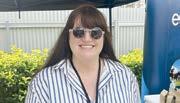

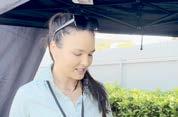

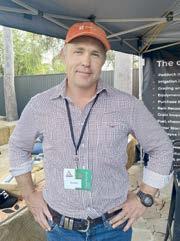
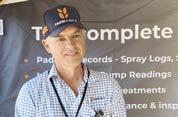
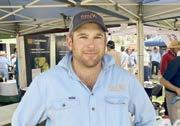

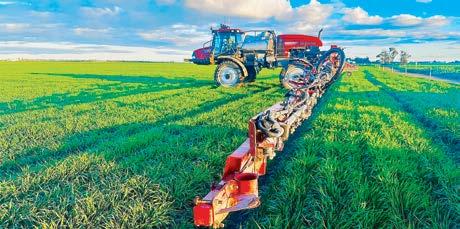
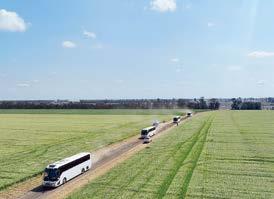
By Fiona Gowers
Groundbreaking innovations that will shape the future of sustainable farming practices in Australia’s agricultural sector were showcased at last month’s PURE Trial Farm Field Day.
A balanced mix of more than 300 industry members, farmers, agronomists, partners and stakeholders took the unique opportunity to see commercial-scale sustainable practices in action at Boolah Farms in Pallamallawa, NSW, just east of Moree.
The focus was on innovative regenerative techniques and carbon sequestration strategies being trialled at Australia’s largest commercialscale trial farm.
Practical, sustainable grain production systems that reduce emissions and improve soil health while maintaining yield and quality is the cornerstone of PURE Trial Farm, which spans 435 hectares.
It is a key site for trialling ReGen4Real - a concept Boolah managing director and founder Stuart Tighe has developed.
Through a farm tour, attendees explored practical, scalable solutions for addressing key agricultural challenges, including carbon reduction, nutrient cycling and supply chain optimisation for sustainability and profitability.
Feedback from the day highlighted the exceptional networking opportunities, with attendees noting the quality of conversations and their potential to drive forward innovations in sustainability.
Reflecting on the success of the day, Mr Tighe said:
“It was a privilege to welcome such a diverse group to the PURE Trial Farm Field Day.
“What stood out most were the invaluable conversations happening throughout the day. These discussions, where perspectives are shared and solutions are explored, are where real progress begins.

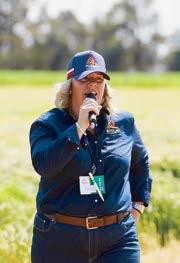
Asahi Beverages regional head of raw material procurement at Asahi Beverages David Engel said:
“This event was a chance to share our knowledge with the broader community and show how sustainable practices can be both innovative and practical.”
A dynamic panel session featured industry leaders Kristina Hermanson (Nuveen Natural Capital), David Engel (Asahi Beverages), Dean Ganino (Barrett Burston Malting Co) and Christian Norgard (PURE Grain).
The panel focused on integrating sustainability throughout the supply chain and the importance of collaboration between farmers, businesses and end-users.
“We are particularly proud of the progress made over the past two years at the trial farm. The work we’ve done here enhances supply chain value while improving traceability and validation for end-users.
“Being involved today is all about collaboration – collaboration is king when it comes to sustainability.
“None of us can solve these challenges alone. We’re far better together.“
When asked about his experience on the farm, David said: “I loved being out here today. Often, I’m in an office in Melbourne, disconnected from what’s happening on the ground. What excited me most was seeing the innovative thinking. While not everything may end up commercially viable, it’s inspiring to see people approaching challenges in new ways.”
Attendees toured three stations on the farm, each demonstrating practical solutions for sustainability, such as carbon sequestration, nutrient cycling and integrating regenerative practices. These stations provided real-world examples of how sustainable methods can be commercially implemented to ensure profitability alongside environmental responsibility.
Kristina Hermanson, Head of APAC and Africa at Nuveen Natural Capital said:
“In my career in agriculture, I’ve been involved in many trials, but what Boolah is doing here with large-scale trials is truly unique.
“The conversations today have been invaluable and it’s these kinds of discussions that help us work out how to move forward sustainably.“

By Sarah Dimond
Andrew Stumer from Kewpie Stockfeeds was
recently picked to be a part of the Australian Independent Rural Retailers ’Young Guns’ program.
The competitive program helps young people in the agriculture industry add to their skill sets and confidence to allow them to thrive within the retail sector.
“It is an overwhelming experience to be selected to be one of the top 10 throughout Australia in the AIRR Young Guns Program,” Andrew said.
Having been in the agriculture industry his whole life, Andrew has a big passion for the livestock industry.
He attended the first workshop held in
Melbourne on 23 and 24 May.
“The workshop was a great experience and [it] was great to hear for sponsors like Gallagher, Zoetis, Virbac and Waratah,“ Andrew said.
“It was a great opportunity to meet and connect with all the other Young Guns.“
Andrew said that the varied mix of Young Guns in this year’s cohort brought different views and ideas to the table.
He hopes that, with this new experience under his belt, he will be able to more effectively advise his customers.
“This program has inspired me into making changes throughout Kewpie Stockfeeds,“ Andrew explained.
“We are stocking a lot more products and catering for a wide range of animals.“

By Fiona Gowers
A new high-yielding, disease-resistant and sweetflavoured strawberry has hit retail shelves after more than five years of development.
Perfected through trials on growers’ farms in Queensland and delivered through Hort Innovation - in partnership with the Department of of Agriculture and Fisheries (DAF) - the Stella-ASBP variety is available in every state and territory of Australia.
Hort Innovation Industry Service and Delivery general manager, Andrew Francey, said the release of Stella-ASBP would be particularly well received by growers and the broader industry.
“This new variety, developed closely with Australian growers, offers consumers a consistently sweet flavour, aroma, mouthfeel and bright red appearance,” he said.
“Stella-ASBP also delivers a boost to production efficiency because of the abundant fruit Stella-ASBP plants are naturally bred to produce.”
Mr Francey said the variety is one of 17 that had been delivered through Hort Innovation using industry levies and funds from the Australian Government and the organisation’s partnership with DAF.
The breeding program accounts for more than 50 per cent of the varieties grown nationally and 85pc of varieties grown in Queensland.
Berries Australia chief executive officer Rachel
Mackenzie said industry had been unwavering in its support of the breeding program, which is strawberry growers’ single biggest investment over recent years.
“It is an understatement to say our sub-tropical strawberry growers are delighted with StellaASBP,” she said.
“The industry has played a critical role in working alongside breeding experts and supporting consumer preference testing to see this latest variety realised. Consumers are going to love it.”
Ms Mackenzie said, critically, Stella-ASBP was also resistant to red leaf disorder, a debilitating condition that impacts plant health and yield.
DAF principal plant breeder Dr Jodi Neal said the Australian Strawberry Breeding Program had a tradition of naming its new varieties after accomplished, talented and remarkable Australians, such as Olympic athletes Susie O’Neill and Tahli Gill.
Stella is no exception.
“Through this variety, we are extremely pleased to be able to pay tribute to the late Australian comedian, journalist and disability rights activist Stella Young and her legacy,” she said.
“Stella Young was fierce and funny. She stood up for people whose bodies looked different or performed differently. She was a voice for people living with disabilities and what she had to say is important for everyone to hear.”


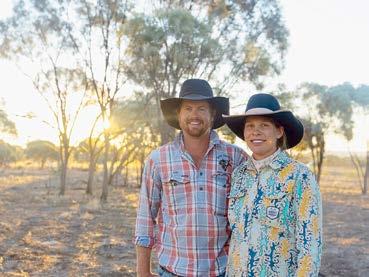
By Fiona Gowers
A picture-perfect herd of mixed-breed cattle grazing the native grass among the Gidgee trees of “Mokana“ south of Hughenden signifies the start of a couple’s future in Queensland’s beef industry.
Generational graziers Sam and Julia Burge have been involved in their parent’s beef operations from a young age but are now forging their own successful path.
In 2023, they used a QRIDA First Start Loan to buy 200 head of pregnancy tested in-calf (PTIC) heifers to join their existing 323 head of cattle, slowly building their numbers to create a viable beef operation.
“We have a mixture of breeds,“ Julia said. “Our original herd consists of Brahman-cross while our newer breeders are Brangus.“
Julia says while they prefer Brahman “as we were both raised around this breed of cattle“ they recently opted to buy Brangus for their new line of breeders to allow them access to a different sale market.
“Both breeds have their pros and cons when it comes to breeding and sale day.
“There are always going to be challenges when it comes to having a beef operation but the forever fluctuating cattle market keeps us on our toes and is probably our biggest challenge.
“It isn’t necessarily an issue any of us will overcome as such but more one that we are continuously assessing and working through to maximize our businesses operation.“
“Mokana“, where Sam and Julia agist their cattle, has a diverse range of country, including spinifex ridges, buffel grass creeks and gullies, as well as black soil flats.
The couple often reminisces about growing up in their own family’s beef operations, which has fuelled their passion - and lay the foundation - for creating their own beef business.
“My family own a big company, Burge Grazing, so we’ve just gone off that pretty much and done our own thing off the side of that. I love it, there’s nothing else I’d do, it’s a good job,” says Sam.
“I grew up around Richmond with my family just being off the land as well, I guess it’s just a passion of ours and all we know,” adds Julia.
The low interest rates and interest-only periods were attractive features of the First Start Loan for Sam and Julia and made it more accessible than other financial support.
“We definitely couldn’t have done it off our own back. Being a young family it would have just been too hard, too much.
The First Start Loan has definitely given us the lift that we need.
“There’s all that fun stuff like paperwork but you get through it all. It is a drawn-out process but I think you get that anywhere you go for loaning money,“ adds Sam.
“My advice would be do your research before you go in and just ring up and have a yarn. It’s not going to be easy, it could take a while but you’ll succeed in the end hopefully if you try hard enough.“
Julia says it was great to have local support from their regional area manager for the North West and Gulf, Sam Fryer, to answer their questions about the application process.
“Sam Fryer was a great help and guided us along the way in the right directions that we needed. He told us openly and honestly what we had to provide QRIDA to get the First Start Loan,” she says.
QRIDA’s First Start Loan offers up to $2 million to help producers purchase livestock to start their own farm business, purchase property, carry out family succession plans or enter into lease or share-farming arrangements.

A “quality“ catalogue of 70 Bullamakinka Santa Gertrudis sires drew buyers from the Northern Territory to Glen Innes, NSW, to post a top price of $34,000 and average $12,786 on Wednesday, 4 September.
The Bullamakinka sale was interfaced with StockLive providing a live telecast and online bidding, which was used by Ian Shaw from Glen Leigh stud at Glen Innes to make the winning bid of $34,000 on the most valuable lot, Bullamakinka U50 (P) AI.
The two-year-old polled bull weighing 866kg is an AI son of Waco Napoleon N80 (P), a sire purchased by Bullamakinka for $82,500 in 2018. U50 boasts an eye muscle area of 137sq cm, scrotal circumference of 45cm and 92 per cent semen morphology.
Repeat buyers Peter and Sharon Seawright from Jazmaree Santas at Injune paid the second top sale price of $32,000 for Bullamakinka U100 (PP), a two-year-old sire weighing 936kg with an EMA of 138sq cm and scrotal circumference of 41cm.
Regular Bullamakinka clients, Darryl and Carmel Waugh of Goovigen, paid third top price of $30,000 for Bullamakinka U198 (PP) to put over their Brentwood Santa Gertrudis stud females.
The 21-month-old is a son of Bullamakinka Queenslander Q80 (P) and caries Wave Hill bloodlines on his dam’s side.
Northern Territory cattleman Bill Scott invested in 15 bulls as a first time Bullamakinka buyer and remarked on the well-presented draft of sale bulls. He’ll join the sires to commercial females on MacDonald Downs Station, northeast of Alice Springs.
Vendor Craig Hindle was very happy with his decision to sell at WQLX Longreach. He said this year’s average of $12,786 for 70 lots was well up on last year’s average of $9453 for 86 bulls.
“It was a good sale with a strong average and full clearance and we saw new buyers in addition to long term clients,” said Mr Hindle.
“Buyers were chasing mainly polled bulls with
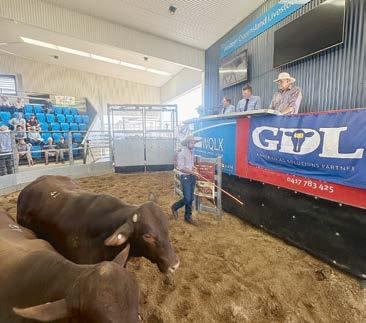
good skin and plenty of growth and it was encouraging to see the spread of bidders, with bulls going to the Northern Territory, throughout Blackall, Longreach, Winton and Boulia and a fair few back east, as well as down to New South Wales.
“The top-priced lot was a really neat bull, similar to his sire, a lovely quiet, easy doing bull with good skin, frame and muscle. We’ve always had
a fair percentage of our bulls going to seedstock producers and we’re happy that they like our cattle.”
For the second year, Mr Hindle’s Bullamakinka stud offered its draft of select sale bulls at WQLX’s state of the art undercover selling centre, with the bulls travelling 1000km to Longreach from their home base at Pittsworth on the Darling Downs.
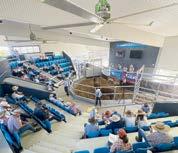
He said with the majority of Bullamakinka sires making their way to repeat buyers in the central west and western regions, WQLX was an obvious choice as a sale venue.
“Bringing our entire draft of bulls to Longreach makes them more accessible for commercial breeders in this area and the Northern Territory and underlies our emphasis on supplying bulls for the commercial breeder market,” he said.
AAM regional manager, James Thompson, described the sale as an excellent result for the Western Queensland Livestock Exchange and proof of the quality of service at the Longreach selling centre.
“Access to StockLive’s online service also spreads the pool of potential buyers and with vendors of the quality of Bullamakinka achieving top results, we’re certainly seenig the value in WQLX to reach a large pool of potential bull buyers,” Mr Thompson said.
Sale agents were GDL Blackall, Simstock Rural Agencies, with StockLive providing a live telecast and online bidding.



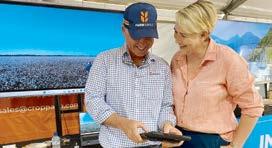
A‘graindetective’optimisingqualityassessments, a platform eliminating paperwork for farmers and soil treatments that increase nitrogen in a natural way cultivated plenty of discussion at an agtech event in Toowoomba.
These innovations were among the groundbreaking solutions for the grains sector that featured at the GRDC GroundUp Agtech Showcase Day on Thursday, 29 August.
Held at the Agtech and Logistics Hub in Wellcamp, the event saw more than 150 people immerse themselves in a vast range of innovations, including producers, processors, resellers, investors and businesses interested in the Australian grains sector.
The Showcase Day featured participants from GroundUp, an accelerator run by the Agtech and Logistics Hub, powered by AgriBusiness Connect and supported by the Grains Research and Development Corporation (GRDC).
GroundUp participant Kurt Walter shared his device, known as The Grain Detective, which enables faster and more comprehensive grain quality assessments to drive efficiency, profitability and sustainability throughout the agricultural value chain.
“The device harnesses the power of AI and machine-learning technologies to provide farmers with swift and precise evaluations of their grain quality, enabling them to secure the maximum price for their produce,” the Walco Seed Cleaning director said.
“Additionally, our solution seeks to empower anyone who assesses grain and seed by reducing their reliance on labour-intensive assessments, enhancing efficiency and accuracy in the graingrading process.”
Fellow GroundUp participants Lee and Cassie Coleman from FarmSimple were equally excited to showcase their company’s groundbreaking one-stop-shop app for farmers.
Already used by more than 100 Australian farming businesses, the platform delivers a concise picture of an entire farming business, from managing paddock activities, equipment maintenance and contracts to staff workflow and timesheets, supporting operational efficiency.
“FarmSimple is a game-changer for farmers, who often juggle multiple apps with a single focus only delivering part of a farm management and compliance solution,” Mr Coleman said.
“The platform is laser-focused on lightening the administrative load for farmers, with an emphasis on connectivity to other systems and an ultimate aim of having to enter data only once.”
Metagen’s Director of Agronomy Research Shane Fitzgerald, who also completed the GroundUp accelerator, shared his team’s innovative soil treatment DIGESTOR, which reduces reliance on chemical inputs such as nitrogen and phosphorus by significantly improving the efficiency of resources already present in the soil.
It specifically stimulates indigenous soil biology, increasing the activity of microbes responsible for nitrogen fixation, cycling and phosphorus solubilisation.
“These changes in soil health also benefit plants in many other ways, such as increases in disease suppression and water-use efficiency,” Mr Fitzgerald said.
“Our team has worked hard to create DIGESTOR, which is microbially formulated to improve crop and soil health, yield and production quality.
“The soil health systems we applied in horticulture and sugar, are now being applied to cropping, which is an exciting advancement.”
AgriBusiness Connect CEO Thomas Hall said
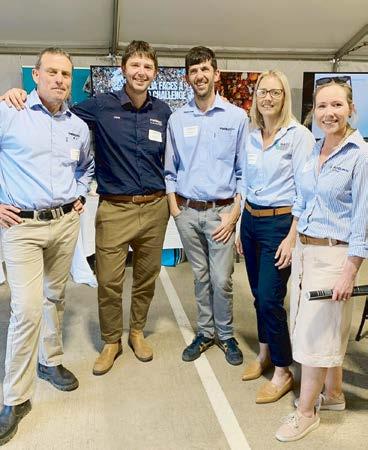
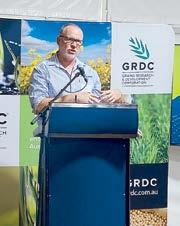




“The
Two Droughtmaster bulls have each sold for $100,000 via online selling platform, StockLive, on day one of the Droughtmaster National Sale at Central Queensland Livestock Exchange (CQLX). Offered by the Laycock family of High Country Droughtmasters, Eskdale, Queensland, both bulls were bought by Steve Daley of Daley Livestock and Property, Glen Innes, NSW, on behalf of a syndicate of predominantly Queensland producers.
The syndicate includes the Yellowstone, Dee Aarnn, Nunkerii, Kross Country, Biarra Glen, Vanguard and Mt Whitestone studs, as well as non-breeder investors, Julie Daley, Steven Daley and Max Wallis.
The first to hit the six-figure price tag was Lot 92, High Country Make My Day (PH) who, at 32 months of age, tipped the scales at 962 kilograms, measured 39 centimetres in the scrotum, and scanned 15 and 10 millimetres, respectively, at the P8 and rib, 143 square centimetres for eye muscle area (EMA) and 5.4 per cent for intramuscular fat (IMF).
The son of record-breaking Rondel Whiskey (PP), who was bought by the High Country and Nindethana Pastoral studs for $160,000 at the 2020 Droughtmaster National Sale, Make My Day was said to have the bone, muscle and sire appeal suited to all buyers’ needs.
The next bull to go under the hammer, High Country Masterpiece (PP), was also sought after for his sire line in Rondel Whiskey (PP).
A standout bull even from a young age, Masterpiece weighed in at 1008 kilograms at 32 months of age, measured 38cm for scrotal circumference and scanned 13mm and 9mm, respectively, for P8 and rib fat, 148sq cm for EMA and 6.2pc for IMF.
Buying agent, Steve Daley, said the syndicate was driven to purchase the two bulls because of their sire line.
“The syndicate has combined to specifically invest in the Rondel Whiskey genetics,” Mr Daley said.
“With High Country Droughtmasters having

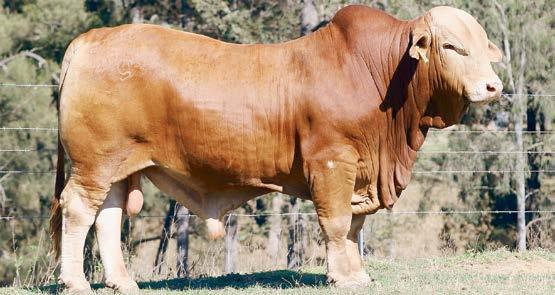
such good success with their semen sales for Rondel Whiskey at their last sale, there’s a lot of interest in his sons and, going forward, in his genetics, so that’s a big reason for the buyers’ interest.”
The 2024 Droughtmaster National Sale will see almost 400 bulls go through the CQLX sale ring across two jam-packed days, with StockLive on-site to offer producers across the nation the ability to watch the sale in real time and bid.
StockLive general manager, Libby Tyrell, said the two Rondel Whiskey sons had drawn strong
interest, both online and from the stands, and were the highest-priced bulls sold via the platform so far this bull sale season.
“We’d like to congratulate the Laycock family of High Country Droughtmasters on such a fantastic result, as well as the syndicate of buyers who have purchased these two standout Rondel Whiskey sons,” Mrs Tyrell said.
“StockLive is proud to be the online selling platform of choice for the Droughtmaster National Sale, broadening the pool of buyers for the ven-





dors who contribute to this annual catalogue of top-quality bulls and giving buyers more choice when it comes to purchasing their new sires.
“This is the first time StockLive has sold two lots worth $100,000 or more in a single sale and these two bulls are in the top five highest priced bulls ever sold via the platform.”
Day one of the Droughtmaster National Sale saw 1004 viewers and 51 registered bidders via StockLive. `

For 60 years the heart of the RENN Roller Mill has been its precision-machined 16” diameter rolls, which provide more grain rolling area per revolution compared to other brands of roller mills with smaller diameter rolls.
Roller Mills save time and money year after year by rolling more grain per hour with less horsepower.





By Fiona Gowers
Why retire when you love what you do everyday?
So asks Cec Fox who for 60 years has worked in the steel supply industry.
“What would I do if I retired? I don’t play golf or any sport. I would have nothing to do with my time. I love the steel industry so I go to work and that keeps my body and mind active and that keeps me young.“
Mr Fox once did retire after 42 years working for Metalcorp Steel.
During his time there, Mr Fox saw many changes in the industry.
For Cec Fox, however, just six months of retirement was enough for him to launch a new business with his wife Debby.
Together, in 2010, they started a new family venture, which they called Rural Steel Supplies and have used their extensive industry knowledge and experience to meet the needs of rural clients.
Mr Fox believes it is the focus on excellent customer service and competitive pricing that has underpinned their success.
“The aim then and the aim now is to supply products to the rural sector while sharing my knowledge of the industry to help farmers choose supplies they need to help reduce farm costs,“ he said
Specifically-developed products to suit the needs of rural clients also contributed to the success of the family business.
“In conjunction with our staff, I have developed many steel products for the rural markets including portable cattle yards and sheep panels, as well as cattle rails, yards and grids.“
Mr and Mrs Fox’s son Ben entered the business eight years ago as a result of high demand for the company’s products and, three years ago, their daughter, Kirsty, also joined the family business.
Ben began in the steel industry at 18-yearsold, he is now 45 so has brought an additional 27 years of industry knowledge to the table and, according to Mr Fox, “he has been a great asset for
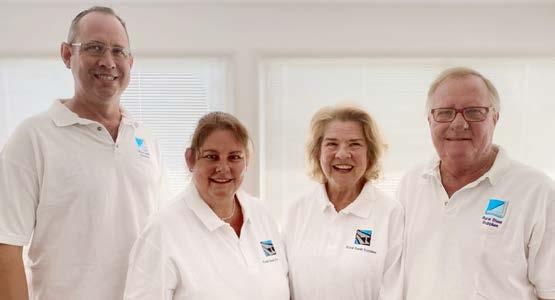
our expansion“.
Ben is enthusiastic about learning more about the rural sector, so much so that he produced a 100-page easy reference booklet that included steel specifications, sizes and dimensions.
“Farmers can have the reference guide on their desk and refer to it for any jobs that come up on their property,“ Mr Fox said.
Rural Steel Supplies has established a wellrespected supply chain catering to all rural steel needs. This includes a transport network to service businesses situated across the country.
The family has leased a warehouse in a trans-
port yard located in Rocklea, allowing for a lowcost business strategy, with savings passed on to their customers.
“We aim to make dealing with Rural Steel Supplies as easy as possible,“ Mr Fox said.
“We offer steel products to customers throughout rural Queensland and have supplied substantial quantities as far south as Orange in NSW and as far north as Katherine in the Northern Territory.“
Mr Fox has always been a firm believer in giving back to the communities that continue to support his business.
“Wherever we make profit, we put money back
into the community to show our support for the rural sector,“ he said.
“We would spend in excess of $30,000 annually on sponsoring the Alpha Race Club, the Pittsworth, Stanthorpe and Toogoolawah show societies and many more rural clubs.“
After his many years in the industry, Mr Fox still loves what he does.
“I’m proud that we can supply material at extremely competitive prices,“ he said.
“We have established a business for the Fox family and Ben will eventually take over. I am so thankful to the rural sector for its massive and ongoing support.“
NIOA and RL pastoral companies have marked a successful return to the on-property auction ring with a full clearance at their third annual joint sale.
After two years of American-style video selling, the two Santa Gertrudis studs showed off the best of their best last month in a hangarturned-all-weather sale barn at NIOA Pastoral Company’s Talgai Homestead near Allora.
Against the backdrop of a huge Australian flag, bidders voted with their hands and feet –with the stands packed, plus many more watching the livestream through StockLive and all 51 bulls finding new homes.
Buyers came from Queensland’s southeast corner to properties in Cloncurry, Richmond and Hughenden in the northwest, southwest to Cunnamulla, north to Clermont, Nebo, Marlborough, Taroom on the Western Downs, the NSW Northern Rivers region and as far as Tasmania.
Repeat buyer Craig Ross of Ross Grazing, Kemmis Creek, Nebo led the charge, snapping up four head – three Riverina bulls and one NIOA bull - for an outlay of $56,500 including the Lot 4 sale-topper Riverina Tambo T20 (P) for $22,500.
The first bull up in the NIOA draft was Lot 9 - the 24-month-old NIOA Utah U11 (P) weighing in at 1095kg with an eye muscle of 134sq cm, IMF of 7.4 per cent, rib scan 20 and scrotal circumference of 41cm. The son of Tookey Creek N24 (P) out of Rosevale Ada N353 (P) is now on his way to Taroom, Queensland after the Brigadoon Cattle Company paid $15,000.
Riverina Santa Gertrudis catalogued 12 Classified S heifers with 11 selling under the stick and one afterwards for an average of $4045.
Sale manager and RL Pastoral’s Rob Sinnamon, presiding over his 35th santa stud sale, was pleased with the results while the initial feedback on the revised format proved it was the right decision.
“I reckon we had 100 bid cards or more and there would’ve been 200 people here,” he said.

“A lot of people enjoy being able to see the cattle (in the sale ring) – and seeing them easy from a good vantage point. We will certainly be continuing with this, with a few improvements.
“(Overall) there’s a lot more confidence reemerging in the industry and I think that’s been reflected (today), while it’s still a little reserved, we saw a total clearance - that is something we strived to do.”
Similarly, NIOA Santa Gertrudis general manager Shannon Gardner said the success of the event combined with growing industry confidence set a positive tone for future selling seasons including next year with the first sons
of Australian breed record breakers Yarrawonga Spartacus S316 (P) and Riverina Roland Sanchez R88 (PP).
“I think it’s been a great result for a smaller stud within the industry. We were very happy to receive $15,000 for Lot 9 to a repeat buyer in Brigadoon (Cattle Co),” he said.
“And that’s one of the things that stood out today – the number of repeat buyers who are back for their third, fourth and fifth year. It shows that we must be doing something right.
“The comments today were around the consistency of our bulls, we had some younger cat-

tle on display here from the genetics of Spartacus and Sanchez and received very positive feedback. I think our line next year will really shine.”
Key highlights:
• 71 lots were sold.
• 51 bulls sold for a clearance rate of 100 per cent.
• 46 Classified S bulls sold for an average of $7728 while five commercial bulls sold for an average of $6200.
• Top-priced bull: Lot 4, Riverina Tambo T20 (P) sold to Ross Grazing for $22,500.
• Second top: Lot 9, NIOA Utah U11 (P), sold to Brigadoon Cattle Co. for $15,000.
• The stud heifers sold for an average of $4045 with Lots 62 Riverina Tara T11 and 71 Riverina Taliah T49 (P) the sale toppers at $5000 each.
* Two 10-straw semen packages were offered: Lot 57 (Riverina Roland Sanchez R88
(ET)) sold at auction for $10,000 to Dangerfield Cattle Co, Taroom while Lot 56 (Yarrawonga Spartacus S316 (P)) sold after for $4000.
Darren Hegarty welcomes you to the second Carabar Angus bull sale at Blackall on Tuesday, 29 October at 10am.
In all, 55 “good quality“ February-March 2023 born bulls will be offered: 50 Angus bulls and five ultrablacks, with the sale to be held at Blackall Saleyards to suit western clients.
Mr Hegarty said the bulls were “at the top of their age group“, adding his focus was on breeding and producing quality Angus MSA-grade cattle for superior structural soundness, eye muscle, intramuscular fat (IMF), growth potential and temperament.
“I believe it’s the durability and longevity of Carabar bulls that really stand out to our clients,“
Mr Hegarty said.
Carabar specialises in Angus genetics, selecting only the finest bulls and females for its breeding program as they strive to produce top-quality Angus cattle that suit the Queensland environment and MSA standards.
“Carabar Angus has five major traits in our breeding program, with structural soundness, eye muscle area, intramuscular fat, growth potential and temperament,“ Mr Hegarty said.
“Commercial cattle producers come back for these traits in our bulls.“
Mr Hegarty said the Carabar sale had held its appeal due to the durability of the bulls offered, in combination with true value for money

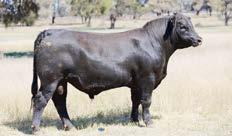
buying opportunities.
All bulls have had injections of 7 in 1, 3 Day, Pestiguard, Vibrovax, Long Range, 3 Germ Blood and have tested negative for Pestivirus.
All bulls have been examined, semen tested and morphology tested.
They can be viewed at Blackall Saleyards from Friday, 25 October, by appointment at Carabar, Meandarra, at www.carabarangus.com or the Carabar Angus Facebook page.
A video of each bull, as well as photos are on AuctionsPlus.
To inspect the draft pre-sale day, please call Mr Hegarty on 0428 748 542, (07) 4665 6164 to make an appointment.
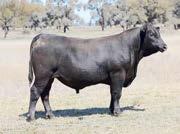





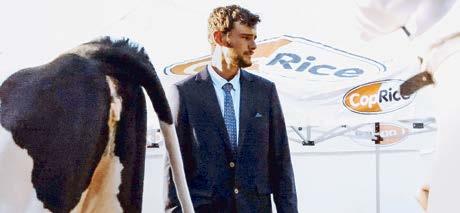

Australia’s most promising young dairy cattle judges have been announced ahead of the Agricultural Shows Australia National Young Judges’ and Paraders’ Competition finals at the Melbourne Royal Show on 28 September 2024.
Agricultural Shows Australia executive officer Katie Stanley says the competition is designed to recognise the best new talent in livestock judging nationwide.
“It’s an extremely prestigious event and positions at the nationals are keenly contested,“ Ms Stanley explained.
“These young judges are the future of agricultural show competitions. The national competition is a coveted opportunity to grow personally and professionally by practising skills against the cream of the crop.“
The winner of the dairy cattle young judges will be determined by who most accurately places the animals from first to fourth, according to its form and characteristics and justifies their assessment.
Each year, Agricultural Shows Australia brings together each state’s best young judges, aged from 15 to 25, to compete in the National Competition Program across nine categories.
Qualification is via success in competitive regional and state competitions.
Young Dairy Cattle Judges finalists:
Patrick English, 19, Malanda, Queensland. “I have lived all my life on a dairy farm. My family has exhibited Illawarra cows at our local show for 108 consecutive years and, more recently, we have shown Jersey and Holsteins. I won the State Young Judges’ finals, which were held at our local show in 2023.“
Bridget Liebelt, 25, Meadows, SA.
Bridget Liebelt started her own stud Torlea Holsteins & Ayrshires in 2014. She has more than 50 animals of her own that she breeds from and shows.
“I live and breathe dairy, having been raised on my parent’s dairy farm in Meadows, SA in the Adelaide Hills.
I started showing dairy cattle at eight years of age and was instantly hooked. I believe that being a great judge of dairy cattle is crucial to making better breeding decisions to breed cows that are profitable and long-lasting, it also enhances your showmanship and fitting skills. Plus, it can create so many opportunities including travel and make long-lasting friendships with people who share the same passion.“
William Dudfield, 26, Burnie, Tasmania.
William represented Tasmania at the 2023 National Finals, placing runner-up. “I’ve been showing since I was three-years-old and I’ve been a part of the paraders since I was nine. I really enjoy the competitive side of it and it’s hard to go past coming second at Nationals at the Sydney Royal Easter Show last year. I’m from a dairy farm and, although I’m in civil construction now, it’s something I’ll always enjoy.“
Angus Fraser, 20, Tongala, Victoria.
“Growing up in Far North Queensland, I became involved in the dairy industry at age eight by attending a dairy youth camp.“
As his passion grew, he sought more opportunities to be involved in the industry and, in 2020, he moved to Victoria to pursue a career in dairy.
“In the years since, I’ve been fortunate enough to achieve first place in my age group in young judges’ competitions at the Brisbane Ekka and at the Royal Adelaide Show. Recently, I’ve been
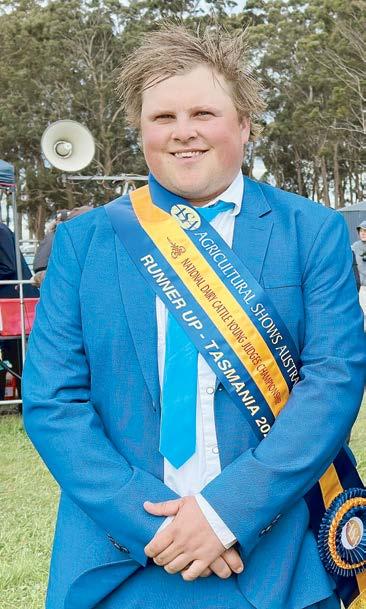
appointed as a judge at four local shows in Queensland and Victoria. This is my second year qualifying to represent Victoria at the national finals but it is my first time being able to attend and I look forward to the opportunity to compete.“
Macs Rubain, 19, Camden, NSW.
“Growing up on a property and having previous experience in the beef industry, I started working on a dairy farm after helping a local stud at the Sydney Royal Easter Show a few years ago,“ Rubain said.
“I quickly found a passion for the dairy industry and began competing in junior judging at local qualifiers. I was lucky enough to win the state final and compete at the national finals in Launceston. Although I was unsuccessful in winning, I was asked to judge some local shows in my region. This year, I won the state final again and look forward to competing at the national finals in Melbourne.“
Zoey Morris, 17, Woodvale, WA.
Growing up in the city, Zoey got a taste for coun-

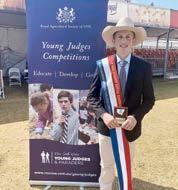
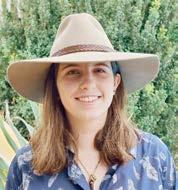
try living on family camping trips. She discovered agriculture at high school in year nine and this allowed her to pursue her desire of working with animals.
“At school, my close friend introduced me to the love of dairy cows. I followed this passion and each year in the school holidays I have attended the WA Youth Cattle Handlers’ Camps where I have learnt cattle handling, parading and judging for dairy cows.“
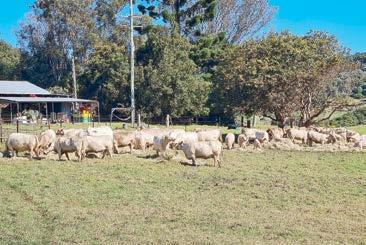
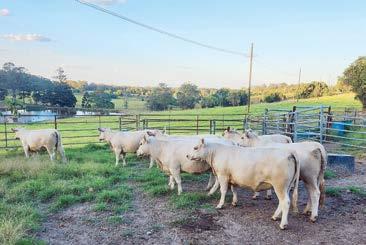
By Fiona Gowers
Lachlan Howland of Golden Pastoral is so confident in the Square Meaters breed, he will buy any purebred to finish and supply directly to willing abattoirs and butchers.
Mr Howland has proven Square Meaters meet the high industry standards for both the domestic beef market and butcher trade.
“We are looking for more breeders to supply us with Square Meaters and Square Meaterscross cattle,“ he said.
Square Meaters are a moderate-framed Australian breed of beef cattle.
Mr Howland said their capacity to finish on grass allowed breeders to claim that their cattle were sustainable under Australian grazing conditions.
“You can run more Square Meaters cows per hectare compared to traditional British or European breeds because, as soon as a calf is weaned, it is being finished, not grown out for another 12 months,“ Mr Howland said.
“For consumers, they offer nicely portioned cuts of beef with exceptional eating quality. The cattle are bred to finish on grass and fit sustainably in the Australian temperate climate.“
Square Meaters reach their mature size relatively early therefore can put their energy into producing a quality carcass or feeding a calf while other breeds continue to grow.
“Our point of difference is that while other breeds are being backgrounded, we are finishing our bodies,“ Mr Howland said.
“Square Meaters cows will typically wean a calf more than 50 per cent of her own body weight. She will hold on when conditions deteriorate and bounce back quickly when they improve.“
Square Meaters were established as a breed to provide premium beef to the domestic market.
Early maturity, heavy muscling and even fat cover are the genetic traits that allow the breed to consistently provide eight to nine month weaners of 225 – 275 kilograms or 12 to 14-month year-
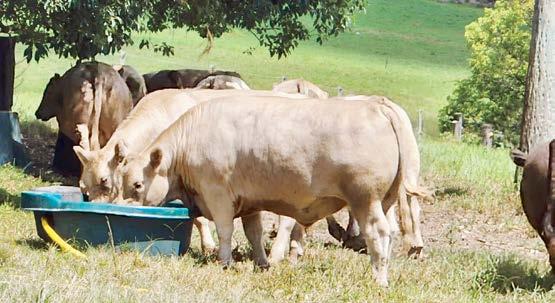
lings of 400 - 420kg off grass.
“This makes them an ideal fit with the domestic market specifications and pasture-fed assurance certification,“ Mr Howland said.
“They are perfectly suited to the highly variable Australian temperate climate and have an ability to hold condition in hard times and flourish in normal conditions.“
Square Meaters consistently punch above their weight in hook and hoof shows, winning numerous live and carcass awards at major shows

across the country.
They also perform exceptionally well in virtual taste-test contests. The inherent traits of docility, muscularity and early finishing ability means Square Meaters will produce tasty and tender premium beef cuts.
They are a home-grown Australian success due to the breed creator, Rick Pisaturo seeking to provide better beef for his customers in the 1990s. Rick sought to develop a breed to suit this market and decided that only through the selec-
tion of pre-1970s type Murray Grey cattle could he produce the carcass that met the local market criteria.
In 1993 Rick commenced the development of the Square Meaters cattle with traits to meet the butcher market and for those discerning breeders who saw the value in the breed and the product produced.
* For more information please contact Lachlan Howland, Golden Pastoral Company, Redland Bay Region on 0400 030 222.



By Helen Mahoney, Aussie Pumps
When a bushfire emergency hits it’s confusing, hot and noisy. The last thing needed is a fire pump that won’t start.
One or more engine drive fire pumps are critical to any fire protection plan.
The Aussie Pumps’ Fire Chief is the best lightweight portable fire pump on the market. It out features and outperforms all others.
In this article, Aussie Pumps’ Chief Engineer, John Hales, runs through some of the most important fire pump maintenance procedures and covers some of the complications that could result from neglecting them. The key is familiarity with how the gear works and how to use it.
Prepare for Fire Season
At the start of the fire season, it’s important to pull out the fire pumps and hoses and check everything is in working order. If the engine needs a service, hoses are leaking or the pump won’t prime, it’s best to get these sorted before the extreme weather hits.
The Honda Engine
The engine must start first pull and the pump work well during a bushfire emergency.
Regular fire pump maintenance will ensure that the pump is primed ready for action at short notice.
Familiarisation will reduce stress during final preparations on the day of high bushfire danger.
We hear horror stories of fire pumps on third world engines not performing with leaking seals or even not starting at all.
This is the last thing you need when dealing with a fire with a fire emergency.
A premium engine brand like Honda will generally start first time, every time, but there are a few basic checks needed to ensure that the engine is in top condition.
It’s important to run the engine for a few minutes on a regular basis during the summer.
Bear in mind that fuel can become stale in just a few months and must be replaced. Using a fuel additive can extend the fuel life.
Make sure the fuel tank is left full and that you have sufficient additional fuel, stored safely on site, for refills during an emergency.
Check the oil level in the engine and refer to the engine manual for the type of oil needed if the level needs topping up.
Aussie’s Honda powered fire pumps are fitted with Honda Oil Alert. This means the pump must be on level ground to ensure the oil sensor detects the correct oil level in the engine.
The engine will not run if there is insufficient oil or the unit is on a slope.
Check the air filter is clean and there is sufficient air flow around the engine for cooling.
The Pump … Trust an Aussie Portable fire pumps, like the Aussie Fire Chief, are self-priming so the pump chamber must be full of water before starting the pump.
This is done by removing the priming cap on the top of the pump body and filling it with water. Replace the filler cap tightly before starting the engine.
Once set up, the check valve inside the Aussie Fire Chief will hold the prime between uses. If for whatever reason the pump bowl is empty, it must be refilled.
Never run this style of pump without water running through it. The water cools and lubricates the mechanical seal.
On starting the pump, the water in the pump bowl will be expelled through the discharge port.
The vacuum produced inside the pump will draw water up the suction line and the pump will self-prime.
The length of the suction and discharge hoses will determine the time taken for the water to start flowing.
A self-priming pump will not prime if there is an air leak in the suction hose or the strainer is blocked.
Check that the suction hose coupling includes the seal and that it’s in good condition.
The strainer at the end of the suction hose must be submerged deep enough to prevent a vortex, but not so deep that it is resting in silt with the potential to clog. Run the pump engine at full revs for the best performance.
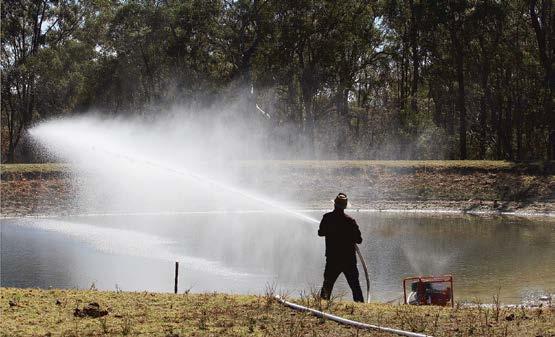

If the pump is used for pumping saltwater, pool water or chemicals it must be flushed with clean water immediately after use.
Failure to do so can lead to corrosion of the pump internals and that can cause it to seize.
Check for leaks around the pump and hose joints once the pump is running. If water is leaking from the back of the pump, the mechanical seal needs to be replaced.
For an Aussie Fire Chief, a simple Rejuvenation Kit is available that contains all the o-rings and a replacement mechanical seal for a full service. It is easy to fit and can be done by any mechanically minded person.
Instructions on how to fit the kit and video guide are available on the Aussie Pump website. Hoses & Sprinklers
All delivery hoses need to be in good condition and long enough to suit the task in hand.
Sprinklers should be checked by running to ensure they are not blocked.
The suction hose must be long enough to eas-
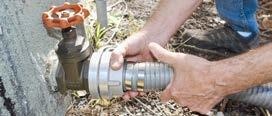

ily reach the water source, even once the level drops.
Check there are no splits in any of the hoses and replace if necessary.
If your pump needs replacing but the engine is in good working order, then Aussie Pumps offer wet end kits to suit Honda screwed shaft engines.
Even if you have a Davey or Onga pump, we can supply a replacement Aussie Fire Chief wet end kit to fit a 5/8” shaft Honda engine.
The Davey impeller is held together with a small Tek screw. When this fails the pump internals are often damaged beyond repair.
Aussie’s Fire Chief wet end kits are simple to install, offer better performance, are more robust and are a much cheaper option than replacing a complete pump.
Your local Aussie Gold Distributor can assist with servicing the engine and retrofitting an Aussie Fire Chief (5/8” shaft) kit.
Maintaining and running your fire pump reg-
ularly are essential for safety during the bushfire season. Hope for the best and prepare for the worst.
Free Aussie Bushfire Survival Guide
Further information on preparing a property ahead of the bushfire season can be found in Aussie’s Bushfire Survival Guide.
This free brochure includes a pump selection guide, details on setting up a sprinkler system and has tips for defending property and livestock.
Further details on pump maintenance and troubleshooting are also covered in the Guide.
Aussie Gold Distributors … primed to help!
Aussie Pump Gold Distributors throughout Queensland are set up with the Aussie range of premium fire pumps and have the expertise to assist with pump service, support and sales.
Check the full page ad for details or online at aussiepumps.com.au.










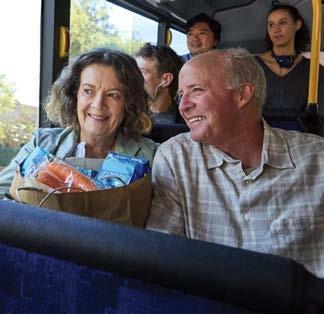


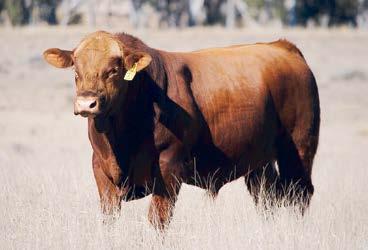
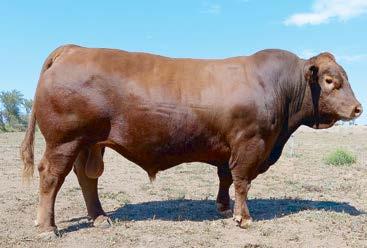
The second annual Golden Advantage sale will be held on 10 October on-farm at Michael and Tracie Borg’s property, Calveston, which is about one hour north of Clermont.
In all, 30 bulls will be offered, comprising 18 purebred Gelbvieh bulls and 12 crossbred bulls, the majority being polled and paddock-reared.
Julie Nixon of Weetalabah said breeding poll Gelbvieh cattle for the commercial industry, with high milk, sound udders, correct structure, doability and temperament was “paramount“.
Past buyer Anne Welke of Chinchilla said this about her Gelbvieh bull: “Yes, he is much loved! He has been a fantastic investment. Our herd was always quiet but Teddy has really set the tone and
the herd is even more quiet. We are wrapped with how the calves look.”
This year, four of the sale bulls from three vendors are sired by Weetalabah Perfect Combination (affectionately known as PC) and co-owned with sale vendors Michael and Tracie Borg.
PC continues to stamp his progeny and is being used in New Zealand, Paraguay, Victoria, Northern Territory, Queensland and NSW, a feat never before achieved by an Australian-born Gelbvieh bull.
Bred by Aderian and Julie Nixon in Dulacca, Queensland, PC carries the legacy of his illustrious sire, RWG Right Combination, a three-time Canadian National Champion Gelbvieh bull.
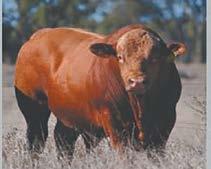
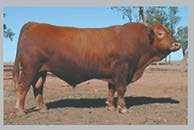
PC’s journey began with remarkable promise, showcasing exceptional genetics from the outset. His light birthweight of 32kg and subsequent growth into a colossal presence highlight his genetic superiority.
With outstanding statistics, including a mature weight of 1100 kilograms, an impressive 150 Eye Muscle Area and a fat score of 8/7, PC demonstrates the embodiment of his name – a perfect combination of traits.
PC’s exceptional qualities were recognised in the ORB Champion of the World competition in 2022 where he secured a remarkable second place in Australasia, marking another historic achievement for Gelbvieh in Australia.


Hoch and Wilkinson are once again the sale agents, in conjunction with Stocklive Elite via a Helmsman auction.
Sale vendors Julie and Aderian Nixon, Weetalabah, Aleacea Nixon, Mickey Mouse, Annie Minehan, Kevlor and Michael and Tracie Borg invite you to attend their second annual sale, onproperty at Calveston.
Food and refreshments will be available on sale day.
Sale photos and videos are available from facebook@goldenadvantage before the sale. Inspections on farms are welcomed and encouraged. Contact any of the vendors to arrange the best time.
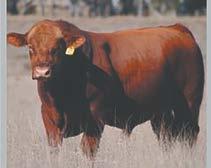


What happened in the air, shaped Australia on the ground.
And what happened at Longreach determined how, as a nation, we opened up the skies.
It was here that the story of Qantas was born … an outback air service between Longreach and Darwin that grew to cover the world.
Qantas was instrumental in opening up inland Australia. In doing so it built a reputation on service and one of safety that is unequalled around the globe.
The airline flies to all seven continents, including Antarctica.
Its history as one of the first airlines stretches back more than 100 years, second only to the Dutch national carrier KLM.
The Qantas Founders Museum at Longreach provides an extraordinary link spanning that time … from flimsy timber-framed biplanes and a tin shed used as a hangar to the architect-designed Airpark that includes aeroplanes covering that same distance in time - a Douglas DC3, Lockheed Super Constellation, Boeing 707 and Boeing 747. In another section is a Catalina flying boat.
It was here that we met Sarah Johnson, senior curator of the museum, whose life story is almost as fascinating as that of the airline.
Qantas was born out of World War I.
In November 1920, Australian Flying Corps veterans Paul McGinness and Hudson Fysh envisaged an air service connecting Australia to the world.
In conjunction with Fergus McMaster, Queensland and Northern Territory Aerial Services Ltd was established.
A year earlier Fysh and McGinnis had set out from Longreach in a T-model Ford to establish a route to Darwin. There were no roads, no maps of any worth, but 51 days later they arrived at Katherine and were convinced Australia needed planes to cover this broad expanse.
This journey started Qantas and eventually the Royal Flying Doctor Service.
While Winton is recognised as the birthplace of Qantas, it was decided that Longreach should be the centre of operations and an early office still stands in the town today.
Our journey started at sunrise. Standing at the museum with the first light of day reflecting on the series of planes on display that have made the service famous around the world.
There is a sound like planes coming into the nearby airport, but they’re not there. It’s a mystery.
Then you realise the huge cantilever shelter over the planes in the Airpark - a contextual masterpiece in its on right - is actually a reflector or a collector of sound from the passing road trains. Either deliberately or by happen-chance it resembles the sound of jet planes. It’s just as if you are on a mystery flight. That’s the introduction we had this time.
The tail of the Boeing 747 stands three-storeys above the surrounding plains. A landmark when you enter the town.
It’s a clear morning and soon we are sharing a coffee with Sarah Johnson in the museum restaurant.
Sarah admits to having had a mixed bag of careers but visual art is a real passion.
The Powerhouse, Newcastle Museum, and the National Maritime Museum at Darling Harbour in Sydney are all part of her resume.
Sarah also worked for the Sydney Harbour Bridge climb during the Sydney 2000 Olympics.
“I look after the collection here,’’ she admits.
“It’s a pretty responsible position … a custodian of everything , from the postage stamps to a 747 and everything in between.’’
The aeroplane collection, spanning the 100 years or so of Qantas, provides some big wall hangings, not just a rack of paintings to pull out as you would at an art gallery.
Indeed, one of the big stories last year was doing a complete stocktake of the collection, Sarah said.
“You cannot run a collection unless you know
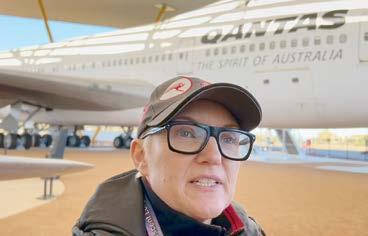
With my grandfather flying in the war I have a sort of family affinity with Qantas. He survived 95 sorties and got a Distinguished Flying Cross (DFC).”
everything that you’ve got here.
“The Founders Museum is more than 20 years old, so we are looking to freshen things up.
“It’s a non-for profit organisation so we really do need to rely on people through the door as well as financial support.
“Tony Callinan is the CEO of Founders and we are looking to future-proof the organisation.’’
Sarah has worked in government before so understands the structures that help financially.
“Even though we’re not part of Qantas, we have a relationship with them.
“Qantas people are on the board - it’s a great working relationship.’’
The story of Qantas is as much about people as it is about innovation.
Looking through the history on display you can just imagine the impact it would have on those who have been in the air industry or the armed forces.
Pilots, the cabin crew, flight engineers, navigators, maintenance people ... and that they would get this nostalgic far-away look in their eyes.
As we walk across to the Airpark with Sarah to see the aeroplanes on show, you reflect on how this was one of those moments in your life where you wonder: How did I get here? How was I fortunate enough to fall into this experience?
What you also come to realise is how passionate, genuine, interested and intelligent Sarah. It’s as if she was born for this role.
Not only incredibly knowledgeable, she is more than that; there is a family history and connection with Australia and Qantas.
Sarah’s history goes goes back to World War II when her grandfather flew Lancaster bombers in what they call the Pathfinders - flying across Europe into Germany.
The life expectancy for bomber crews was very short, with fledgling crews often being lost during their first 12 operations and an “operational tour“ usually of about 30 missions.
Her grandfather flew more than 90 ... and survived.
So Sarah’s passion drove our conversation with her - through history to the current time where she is undertaking some remarkable work for the museum to ensure its longevity for generations to come.
She showed us through each of the aircraft on display and, honestly, it was the most phenomenal, insightful, fascinating journey through aviation history.
We thought we knew the airline and its history well but this experience took your insight and knowledge to another level.
I had no idea how opulent some of the flight experiences were for those better-off in society.
The plane that I was most taken by was the one where the entire furnishings were teak.
It was a Boeing 707 and there are photographs of the layout. It’s really quite incredible how these planes were fitted out.
Yes, there were only 12 in the Qantas fleet and this particular aircraft was number one.
Apparently John Travolta has his own private 707 in Qantas colours and is numbered 13.
There is a photo of him meeting the captain of plane number 1.
There is also a photograph of Michael Jackson who apparently used to charter the plane with the Jackson 5 to events and had one time considered purchasing the aircraft.
Sarah described the light show which is held at sunset in the centre arena, amid the aircraft display.
Here, laser shows are projected onto the planes and she described it as very moving because it tells the stories, over time, of people and employees, and passengers and their association with Qantas.
Last year was 100 years of the first mail run while 2019 was 100 years of the foundation of the service.
My first flight with Qantas was from London back to Sydney in the early 1970s, on a Boeing 707. So it was incredible to be given a complete tour from nose to tail of the plane including sitting at the controls.
The latest addition to the fleet of planes is the Lockheed Super Constellation. It was still in pieces last time I was here after having been discovered in a destitute state on the perimeter of the Manila airport.
Now it’s been restored by an incredible band of volunteers. In many way it is the definitive airplane - the four-engine, propeller-driven airliner could be considered the Aston Martin or the Mustang of the skies.
“It was the first pressurised cabin and female flight crew,’’ Sarah said.
“The flight attendants are one of the great stories when we’re talking about aircraft.
“I’m an air force person. My life has always been about flying … sometimes postings overseas, I have always grown up in that aviation community.
“With my grandfather flying in the war I have a sort of family affinity with Qantas.
“He survived 95 sorties and got a Distinguished Flying Cross (DFC).’’
Paul McGinness and Hudson Fysh were both in the Royal Flying Corps during World War One and received DFC’s for their outstanding service.
“I had the fortune as a child, when we were in the UK, to live not far from where my grandfather was based. That was at Warboys, in Cambridgeshire.
“By his late 80s early 90s my grandfather was still around. There was a Polish guy named John in his crew.
“I have just finished reading Magda Subansky’s book about family trauma. What I didn’t realise was how many Polish pilots and military were pushed out and able to escape to the UK then joined the RAF and British regiments.
“My grandfather was lucky enough to come out here once and meet John and the other members of the crew.
“Everything is a bit of a collision in my life, what with my museum and gallery background. I love design and this history, it’s a fusion of all that.
“We get lots of people here and obviously it is where they have a family connection to Qantas.
“I think it’s why it’s so popular, because it’s so nostalgic for a lot of people.’’
As we explore the interior of the Super Constellation, we are reminded that flying was absolute glamour at the time. People would dress to the nines and dinner be served as if you were in a fine restaurant.
This Constellation was not part of Qantas and had been used by the US Navy, then saw out its days to carry seafood for a commercial operator.
“A team of volunteers brought the giant jigsaw together in just a matter of years.
“It’s different to the other planes that we have here. The 747 is virtually as it was when it landed.
“The 707 is a luxury version that was chartered by some famous people, and the Constellation is the reinterpretation of flight as it was then.
“It’s very much about telling the story.’’ Sarah relates how the museum has received some incredible donations of items, such as those from an original female flight attendant on the Constellations.
“Her name was Adrienne Gundlinger - her married name was Herrod. The family donated logbooks, photographs, her letter of employ.
“Her photos are in the Connie.
“The plane has been been beautifully reinterpreted … restored with panelling, photographs and very glam.
“There is an amazing photo of the nine female flight attendants on the first flight and Adrienne is one of them.
“Thousands applied and nine got the job.
“When they married they were fired. You had to be single, to be tall and slim and a nurse to look after kids and passengers.
“The minute you got married you were out, but they had an incredible career.
“The use of her logbooks and diaries is incredible … the memories of passengers, some places she visited. They will go on display.’’
Another great donation tells part of the Catalina flying boat story.
Rex Senior was a crew member in Singapore when it fell to the Japanese in World War Two. The donation is from family descendants.
“They would fly these clandestine missions,’’ Sarah said. “They flew to Ceylon and Karachi, that whole region.
“Obviously the Japanese where everywhere so they had to fly by night and maintain radio silence.
“They were known as the Double Sunrise flights as they saw two sunrises on each flight.
“We’ve been donated Rex’s log books ... it was the 80th anniversary recently of the inaugural flight.
“We have a copy of Rex’s life story and his career was documented.
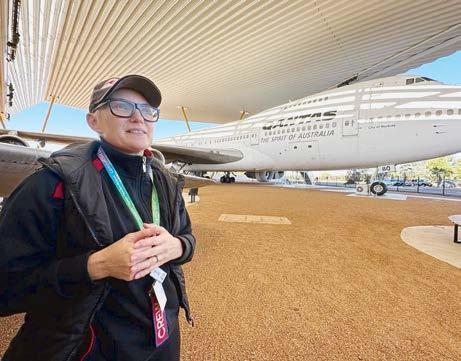
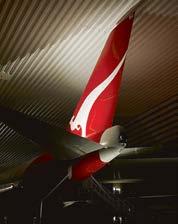
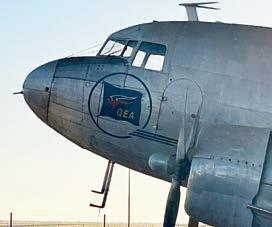

“The Catalina’s flew in an out of the Swan River in Perth. The air crew were dressed in civvies so they were not identifiable.
“They were Qantas personnel - they weren’t military. So people would admonish them for not being in the middle of conflict.
“Little did people know that they were doing one of the most risky things - they were carrying the casual VIP, together with miles and miles of microfilm … they couldn’t afford to take the extra weight of documents.
“Everything was just transcribed onto microfilm for secret communicate.
“These guys were doing extraordinary things.
They were literally navigating by the stars.’’
Speaking of night and stars, the cantilevered air frame over the planes was designed by Robinson Architects.
The museum has a conservation plan in place to future-proof the collection of planes: From how they are cleaned to protecting them from the weather.
The light show each night sees projections onto the planes. Whimsical and funny, it’s done in the round and is really quite moving in parts, Sarah said.
“It talks about the journey of Qantas, the fact that the founders survived World War One, and
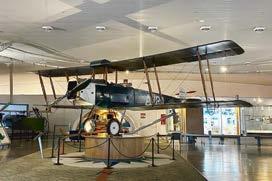
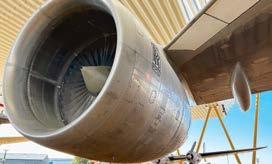


there is a really funny story in Fysh‘s book.
“McGinnis was part of an elite secret squadron called the X-Wing and I think George Lucas stole that idea for Star Wars.’’
The amount of change that has taken place, the innovation in our generation alone is here on show at Longreach.
From the DC3 to the 747, it’s something like 35 years of change and technology … that’s quite remarkable when you look at it.
“Think about someone who’s lived to be 80, 90 or 100 and you see the amount of innovation they have witnessed.
“This place is a lot about the community, a key thing of the culture of this entire organisation is Longreach.
“The genesis of the museum was in the 1980s.
The original hanger was built in 1922 and that formed the start of this museum in 1996.
“The museum was completely driven by the community and the region as well.
“Can you imagine the town without this or the Stockmans Hall of Fame?’’
In many ways it is an analogy of Qantas and Australia. Can anyone imagine one without the other?
By Fiona Gowers
The nation’s finest young poultry judges flocked to the Royal Adelaide Show in September, with Queensland’s Shikira Stehbens emerging as the national champion in the prestigious Poultry Young Judges Competition.
The competition sees participants rank birds from first to fourth place, judged on their visual rankings, handling technique and oral presentation.
Each year, Agricultural Shows Australia brings together the best young judges from across the country to compete in the national finals, which spans nine categories.
This year, the Royal Adelaide Show hosted the National Poultry Young Judges Competition due to the avian influenza outbreak, while the Melbourne Royal Show will host the bulk of the 2024 categories.
Shikira, 22 of The Range in Queensland, expressed her joy and gratitude after the win, saying: “This has been a dream of mine for the past three years - to represent Queensland in the National Poultry Young Judges Competition and honour my judging skills.
“I am over the moon to have accomplished my dream. I would also like to thank the other representatives for their great work and the sponsors.“
Reflecting on her journey Shikira said: “I started showing my chooks when I was 14-years-old. I then found my mentors, Phil Tisdell, Barry Tisdell and the late Rob Barnard.
“In the last year, I lost a very close friend and mentor. I managed to continue showing for both myself and in memory of him.
“I have had multiple champion-winning birds at shows in the last five years at both agricultural and club shows.
“This year, I even had a bird in Champion Row at the Ekka 2024. I am beyond proud of my journey and everyone who has helped along the way.“
The competition was fierce, with second place going to New South Wales’s Kollah Cannon, 16,
from Glenorie.
Kollah reflected on her experience: “It was a great experience and I thoroughly enjoyed meeting all the competitors from around Australia while gathering insightful knowledge.
“I’m proud to have been named runner-up.“
Kollah’s passion for poultry judging began early, as she recalls: “It all started when I said to my mum, ‘Oh, that’s a pretty duck,’ and she replied saying that there were beauty pageants for them.
“So, I entered my blue and white Muscovy duck into the Luddenham Show in 2016 and won Champion Junior Waterfowl.
“Ever since then, I’ve been hooked.
“After that, we bought the Poultry Standard 2nd edition and I picked my beloved Bantam Australian Black Langshans. I’ve been lucky enough to have great mentors throughout the years who have taught me what it means to live and breathe poultry.“
Third place was awarded to Edward Lock, 16 from Naracoorte, SA. Eddie, who is currently a Year 11 student, hopes to study agriculture after finishing school and has a long history of exhibiting poultry and pigeons.
Agricultural Shows Australia executive officer Katie Stanley commended the participants, saying, “These young judges represent the future of agricultural show competitions.
“The national competition is a coveted opportunity for them to grow personally and professionally by practising their skills against the cream of the crop.“
Agricultural Shows Australia Young Poultry Judges placings:
1. Shikira Stehbens, 22, The Range QueenslandNational Champion
2. Kollah Cannon, 16, Glenorie NSW - Runner-Up
3. Edward Lock, 16, Naracoorte SA - Third Place
4. Chelsea Hughes, 19, Northam WA
5. Josh Hancock, 19, Merbein South Victoria.
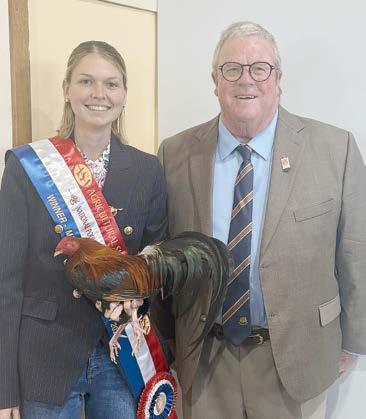
A regional university with global impact, Southern Cross University is pioneering agricultural research and education.
From plant breeding to soil testing and courses in regenerative agriculture and veterinary studies, it’s all about farming for the future.
Nestled in a regional town an hour south of the Queensland border, Southern Cross University’s Northern Rivers campus in Lismore is surrounded by cow paddocks, cane fields and macadamia plantations.
Lismore is the University’s hub of agricultural activity, from research labs to science classrooms and commercial activities.
It’s also home to the University’s new Veterinary program.
Plant breeding is a particular strength, including crops such as tea tree and rice.
One of the rice breeding programs is developing rainfed cultivars of antioxidant-rich black rice suitable for growth in sub-tropical Australian climates, reducing water use, methane emissions and supporting local producers.
Funded by AgriFutures Australia, there’s also research aiming to improve and expand Australia’s domestic coffee industry – where 99 per cent of coffee is from imported beans – with varieties better suited to Australian growing conditions and sophisticated consumer palates.
These are just two of the research projects being undertaken by Southern Cross University through the Harvest to Health research cluster, to enhance the sustainable production of functional foods and natural products, driving value for both producers and consumers.
Plant geneticist Professor Tobias Kretzschmar says the University’s research brings together its capacities in plant science, analytical chemistry and complementary medicines to serve industry.
“It’s best seen as a research/industry nexus,” Professor Kretzschmar says. “It’s where we bring industry and science together to find solutions for the industry.” Developing a better understanding of regenerative agriculture Developing holistic indicators of success for grain farmers undertaking regenerative agricultural practices is the focus of a research project led by
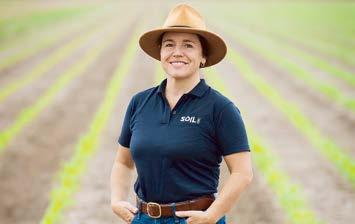
the University’s Dr Hanabeth Luke.
With the support of the Grains Research and Development Corporation, Southern Cross researchers are conducting an online survey to gather insights on crop farmer perspectives of regenerative agriculture.
Regenerative agriculture techniques have gained popularity in recent years, yet a regulatory or widely accepted definition remains elusive in Australia.
The survey aims to enhance understanding of pertinent farming objectives and their potential impacts on soil, land, business management and farmer wellbeing.
"The aim of this survey is to gather insights on grain grower perceptions and understanding of regenerative agriculture, to help us to develop a useful definition for the grains industry,” says Dr Luke.
Helping farmers improve soil health Southern Cross University is also harnessing its research capabilities to provide tailored advice to farmers regarding their soil health.
The University’s Environmental Analysis Laboratory (EAL) provides a range of analytical services for landowners including agricultural soil testing; general soils and solids testing; waters and other liquids testing; compost, potting mix and landscape soils testing; contamination testing; plant testing; acid sulfate soil and acid rock testing; and a Scanning Electron Microscopy (SEM) Unit.
Landholders across the country can submit their soil samples to EAL for fast, accurate and cost-effective analysis.
Training the next generation of agriculture specialists Through its research strengths and industry connections, Southern Cross is now educating the next generation of agriculture professionals through a world-first Bachelor degree in regenerative agriculture as well as a new Veterinary program, launching in 2025.
The Bachelor of Science with a specialisation in Regenerative Agriculture was designed in collaboration with industry groups and the farming community.
The course covers human ecology, agroecology, regenerative agricultural practices, strategies and soil management.
Students also develop the capacity to produce regenerative strategies for farms and landscapes.
For postgraduate students, a Graduate Certificate and Graduate Diploma of Regenerative Agriculture are also available.
With practical on-farm residentials embedded in degrees, Southern Cross has been ranked number one in Australia for skills development in Agriculture and Environmental Studies in the Good Universities Guide 2024.
The achievement is bolstered by a ranking in the global top 450 universities for Agriculture and Forestry in the QS World University Rankins (Ranking by Subject) 2024.
Fostering regional veterinary professionals As the University now looks to the future, it will expand its agriculture offerings through new courses in Veterinary.
The Bachelor of Veterinary Technology is a three-year degree and will launch in 2025 at the Lismore campus.
Veterinary Technologists assist with the clinical care and welfare of animal patients by taking x-rays, analysing blood and urine samples, administering medication, and performing medical care, plus simple procedures such as dental descaling and polishing.
A Bachelor of Veterinary Medicine (Honours)* is currently in development at the University, slated for launch in 2026.
Executive Dean of the Faculty of Science and Engineering, Professor Jon Hill said the University offered a unique environment for Veterinary.
“The research profile, teaching approach and location combine to create a unique opportunity for veterinary training in the Northern Rivers.
It’s ideal to have graduates that come from the regions and want to stay in the regions – this is where demand is the greatest for veterinary professionals,” he said.
Learn more: scu.edu.au
Studying at Southern Cross University in 2025 will transform your future. Build your career in Business, Education, Engineering, Healthcare, Law, Regenerative Agriculture, Science, or Veterinary Practice.
At Southern Cross University, we’ve reimagined education to make it more engaging, interactive, and applicable to your career.
Our unique six-week term teaching model puts you at the centre of the learning process, providing you with a deeper and more meaningful degree with greater flexibility.
Whether you are a year 12 student about to graduate, or looking to upskill or change career, we have study options to suit everyone.
You can choose to study full time or part time, online from home or on campus at Gold Coast, Co s Harbour or Northern Rivers.

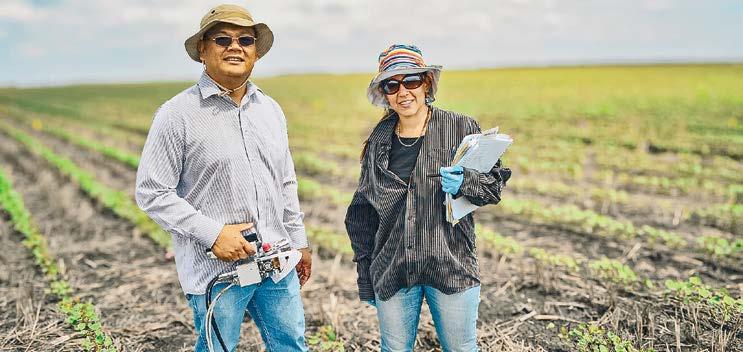
University of Southern Queensland (UniSQ) researchers will receive part of a $1.45 million boost through the Australian Government’s Aus4Innovation program to develop technological solutions supporting sustainable agricultural practices in Vietnam.
Managed by CSIRO – Australia’s national science agency – the Aus4Innovation Program has announced funding for three projects across Australia’s university sector that aim to use high-tech solutions to address the complexities of modern agriculture.
UniSQ researchers Professor Armando Apan, Professor Tek Maraseni, Dr Thong Nguyen-Huy and Dr Bikram Banerjee received a grant for their project, which aims to improve crop monitoring and access to information by small-scale farmers and government decision-makers in Vietnam.
Professor Apan, who is leading the research, said the collaboration between UniSQ and the Vietnam National Space Centre would harness geospatial technologies to provide vital crop information and boost productivity in rice and fruit crops.
“Effective crop monitoring is vital for informed decision-making among Vietnamese farmers and other relevant stakeholders, but a significant number of smallholder farmers do not have access to critical imagery indicating crop stress and yield,” Professor Apan said.
“The primary objective of this initiative is to improve data accessibility and enhance the accuracy and detail of information available to smallscale farmers, which we’ll achieve through the
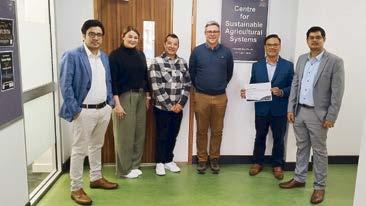
creation of cloud-based internet mapping tools.
“With these resources at their disposal, Vietnamese farmers will be better equipped to make well-informed decisions aimed at boosting crop yield and increasing household income.”
Professor Apan said the primary goal was to create detailed maps for rice and fruit crops at the farm level by utilising field data and AI algorithms, in conjunction with drone and spaceborne sensors.
UniSQ Centre for Sustainable Agricultural Systems Director Professor Robbie Girling said the University was proud to be leading research that would help address complex global challenges.
“The University of Southern Queensland is thrilled to hear that Professor Armando Apan, Professor Tek Maraseni, Dr Thong Nguyen-Huy and Dr Bikram Banerjee have been awarded an Aus4Innovation Partnership Grant,” Professor Girling said.
“This research is a prime example of UniSQ’s ongoing commitment to research that leads the way in shaping the future of sustainable global food production.”
CSIRO counsellor to Vietnam and director of the Aus4Innovation Program Dr Kim Wimbush said the three projects receiving funding would use artificial intelligence for carbon farming, geospatial technology to provide real-time crop data and digital traceability and certification to enable more sustainable farming.
“Advancing technological solutions for local farmers in Vietnam by working with farmers, industry and research institutes will build enduring capacity and skills, to help reshape Vietnam’s agriculture practices,” Dr Wimbush said.
“These projects will not only have an impact on individual smallholder farmers, but shape the sector through adoption of these solutions more broadly.
“Partnering universities with the innovation ecosystem in Vietnam means they can test products at scale and speed in a unique market in Vietnam and bring the successful implementation techniques back to the Australian agricultural sector.”
The UniSQ research project will receive $487,718 over two years as part of the Aus4Innovation Program.
The Aus4Innovation Program is a 10-year (2018-2028) $33.5 million flagship program aimed at strengthening Vietnam’s innovation system to support inclusive and sustainable socioeconomic development.
Australian plums are headed to Vietnam following a strategic research and development effort and successful market access negotiations led by the Australian Government’s Department of Agriculture, Fisheries and Forestry.
The new market access is set to unlock major growth opportunities for Australia’s plum industry, driven by Vietnam’s soaring demand.
In 2023/24, Vietnam’s plum imports surged by 132 per cent, presenting a prime opportunity for Australian producers to tap into this rapidly growing market.
Hort Innovation chief executive officer Brett Fifield said the achievement follows the groundwork laid by a series of investments delivered through Hort Innovation using industry levies and government funds, driven by the industry’s laser-sharp focus on export.
“The Australian plum industry’s trade-related research and development approach has
been targeted and that is paying off,” Mr Fifield said.
“Summerfruit growers have supported trade development activities, export strategies, market intelligence, grower education and promoting Australian summerfruits through successful campaigns in Vietnam.”
The latest NielsenIQ data shows Vietnamese consumers are increasingly focused on health and wellness, driving demand for safe and highquality products, ideally positioning Australian produce.
Summerfruit Australia chief executive officer Trevor Ranford said Vietnam is an increasingly important market, especially as the country experiences rapid economic growth.
“Australia prides itself on being an innovative producer of fresh sweet stone fruit,” Mr Ranford said.
“The clean environment and ideal climate of our growing areas are perfect for producing high-quality plums that meet the expectations of discerning customers.”
The summerfruit industry has a goal to increase their exports to 40,000 tonnes by 2030. This includes increasing the export tonnes to existing markets, as well as entering new markets such as Vietnam (for plums), New Zealand, the USA, South Korea and Japan.
Summerfruit Australia trade development manager, Charlotte Brunt, said the industry was gearing up to achieve their export ambitions through a new trade development program funded by grower levies and delivered by Summerfruit Australia.
“Efforts are underway to proactively support the summerfruit industry’s export goals by building our export capability, ensuring continuous improvement in the quality of exported
produce, and fostering vital connections and relationships across the supply chain,” Ms Brunt said.
In addition, the summerfruit industry is ramping up domestic communication and engagement efforts through a new levy-funded program that has brought an industry development manager and communications manager on board.
Plum facts from the 2022/2023 Australian Horticulture Statistics Handbook:
• Australia produces close to $67 million of plums each year.
• Most plum production occurs in Queensland, Western Australia, South Australia, New South Wales along with Victoria being the largest producing state.
• Plums are produced from November to April.




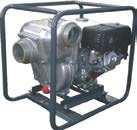


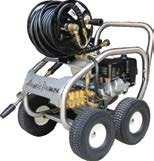
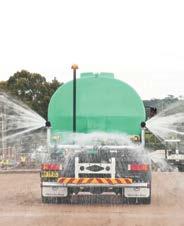


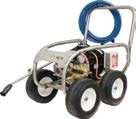
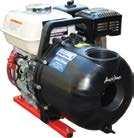


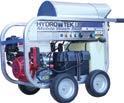
By Erle Levey
The third Agvention regenerative farming field day proved to be a whole lot of fun as well as being informative and inspiring.
A variety of speakers attracted a full house at Kandanga Farm Store who were keen to look, listen and learn about new ideas in restoring soil health, biodiversity and sustainable farming methods.
Yet many of the ideas stem from older ways of caring for the land.
This included the reinforcement of the way the key to healthy crops, animals and consequently food, lies beneath our feet; the quality of the soil.
Tim Scott of Kandanga Farm Store said it was a good mix of speakers, who delivered so much new information.
That was part of the challenge for this year’s event - to remain fresh and relevant in order to build on past successes.
“What stood out was everyone who attended was into regen farming,’’ Tim said. “They were keen to look differently at the landscape, plants and animals.
“They were open to seeking different income streams, instead of spending money on things you can make money from.’’
What took many by surprise was the inspiring talk given by young farmers Genevieve Kane and Isaac Perina, who are among the 2024 scholarship recipients from the Lachlan Hughes Foundation (LHF).
Showing great maturity and knowledge, they detailed their journey as two of the 10 participants selected for the 2024 LHF Program.
Genevieve grew up at Carters Ridge, in the Mary Valley, and Isaac at Maryborough. Their talk showedthereisplentyofoptimismfromtheyoung generation for a future on the land.
At the ripe age of 19 and in her second year of a photographic degree at Griffith University, Genevieve was a city slicker and vegan who was sent to the bush to document country life.
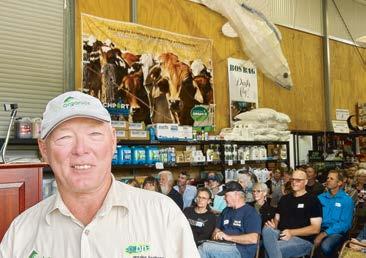
Remarkably, this included a few days at the Hughes family property at Dulacca where she met Lachlan.
This was before Lachlan’s tragic death in a farm accident.
Yet it was at this time Genevieve was introduced to the ethical production of food, and that time really inspired her to get involved in farming.
Established in 2019 by Philip and Adele Hughes in honour of their son Lachlan, the Hughes Foundation looks to continue his vision and passion for the development of regenerative agricultural practices for grazing lands.
He believed that it was possible to rebuild soils and increase their sustainable productive capacity
to withstand the variables of rainfall and that this inturnwouldrevitaliseruralcommunitiesandimprove the economic sustainability of the industry.
Such was Genevieve’s belief in regen farming she decided to move to Emerald and undertake a Bachelor of Agriculture at Central Queensland University.
As a result she was catapulted into the channel country of Western Queensland, working at Cordillo Downs, between Innamincka and Birdsville.
Genevieve then moved to Durham Downs, a S. Kidman & Co property and one of the highest regarded grazing blocks in Australia.
That’s where she met Isaac, who had a similar story to her.

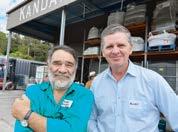
Growing up in Maryborough, he went from university in Brisbane then headed west to Naryilco, at Thargomindah, also owned by Kidman & Co. He went on to be head stockman at Durham Downs, south of Windorah and along the Cooper Creek.
Genevieve went on to learn how to start horses under the guidance of Rusty Ferguson.
Together with Isaac, they were encouraged to apply for the Hughes Foundation scholarship, and at same time given a job at Dulacca Downs.
The scholarship entails mentoring with the group of other participants from throughout Australia. They come together every quarter for discussions and presentations from within the regen and agricultural sector.
It is about personal as well as practical development involving soil health, pasture management and the use of technology.
The amazing part of the Hughes Foundation is that such a tragedy can deliver a positive outcome … a living memorial that is growing year by year.
Both Genevieve and Isaac are incredibly grateful they have the chance to learn so much.
They can see their future and at the end of the scholarshipwillheadouttoimplementthingsthey have learned.


It is giving them opportunities for extra courses, given them contacts, and put them in touch with a group of inspiring people.
So far this year they have been given an understanding of the basis of sustainable soils, Isaac said.
They have also been shown a satellite imaging program telling how much feed is in a paddock.
“Based on satellite images, it is a really good tool to take guesswork out of pasture management,’’ Isaac said.
“Story telling and public speaking is another aspect the Lachlan Hughes Foundation focusses on.
“We are learning far more than expected.’’
As part of their year with the scholarship, participants are given a simple but effective project to undertake.
In this case, Genevieve and Isaac were given the task of rehabilitating an eroded gully on the Dulacca property.
They were to do it in such a way that the work could be maintained and upgraded over time.
The erosion gully was among trees and cattle grazed there intermittently in high density, Genevieve said, but due to the state of the soil whenever it rained the nutrition was lost.
“The paddock above it was farmed with monoculture crops so the hydrology had changed. This means the soil is dispersive and would crumble when water hit it.
“It’s dirt, not soil.
“The gully has been caused by uneven contour banks that have broken out at the lowest point and most degraded sections of the paddock.’’
At the start of year Genevieve and Isaac ran tests and found a maximum of five plant species found in all of their test quadrants.
The soil was seriously lacking in organic matter, fungal activity or any sort of root activity.
“We did infiltration tests and it took more than 20 minutes for an inch of water to seep into the soil.
“When we used a penetrometer we could only get it 1.5cm into the ground.
“That makes it hard for any plant roots to get down into the soil.’’
Isaac said they decided to graze cattle to impact the area - 60 head with high intensity graze
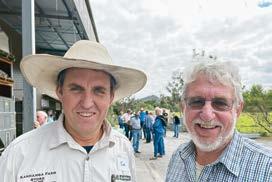
through this and surrounding areas.
“We decided to include charcoal in our project, first by mixing it with canola to make it palatable and get the cows to eat it.
“They inoculate the charcoal with their gut biology and then it spreads into the soil.
“You effectively have microbiology and fungal activity in tiny homes in the soil, and that holds a lot of moisture.
“This was 30gm of biochar per head per day.
“We tried to get the lick mixture to last two days but it lasted two hours.’’
Another part of the project was bale grazing, Genevieve said, in which they used the technique to get the cattle into the erosion hole itself. In doing so they would break down the edges and the headwall cuts.
“We put the bales into chokepoints so, when the cows were not in there, it would act as a bit of a barrier and store water.
“With 40mm of winter rain, we saw the banks breaking down, a barrier in the gully forming and storing some water. This resulted in the bales releasing nutrients, and there was some green growth as a result of mulch and some slow water.
“Under all the mulch you could see the fungal activity.
“We’ve come to realise that uneven contour
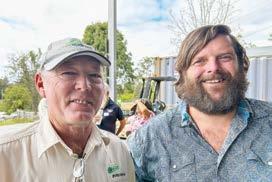
banks take the soil away. They need to be level and slow.
“We intend to lay a bit more mulch and get carbon into the soil, then plant grass seed and get some roots into the soil.’’
The year has not just been about the project, Isaac said.
“It’s a vehicle for all of the things we are going to learn.
“We are part of an inspiring group of people and making great friendships - they are from different parts of Australia and with different skill sets.
“It has inspired us to attend more courses and work on our own knowledge: Planning, data collection and time management.
“Mostly its about being able to share our story and the changes taking place.’’
For Genevieve, it’s also about working on their own health, nutrition and mindset.
“That’s so important. We need to work on ourselves first and foremost before we can work on external things.
“It’s been life-changing for us.’’
LESSONS LEARNED
Agvention 2024 covered a lot, Kandanga Farm Store’s Amber Scott said.
This included gaining a new appreciation for weeds, trying to count dots and stars, pretending to be grass, and realising that sensitive design can restore landscape hydrology pretty quickly and economically.
Participants also learned how powerful livestock can be in contributing to ecosystem restoration, and learned that while there are no silver bullets with regenerative farming, there are plenty of tools to help.
Guest speakers included Brian Wehlburg of Inside Out Management, Mick Alexander of CQ Organics and naturopath Heidi Merika from Eumundi.
Then there was Ruby Earsman of Terra Firma Fertilisers, Hamish Andrews of Tarwyn Park Training at Kybong, the Creek Doctor Peter McAdam, Gerald Wyatt of Livestock Evaluation Services and Victoria Kane, who peer-reviewed scientific research into Rats Tail Grass as a potential human super food.
It was incredibly rewarding to see everyone gathered together, making connections, challenging paradigms and pushing boundaries, Amber said.
The fact remains: Healthy soil means healthy food, and that helps bring out the best in everyone.
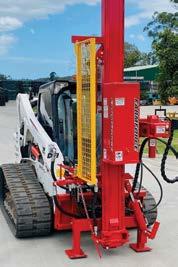


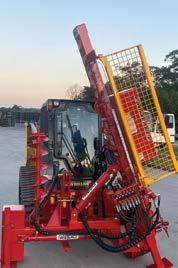
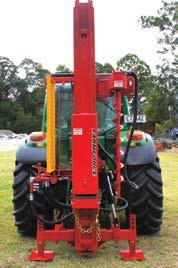

By Sophie Mossman
Farmers from across the country made their way to Canberra to send a clear message to the Federal Government and make their voices heard.
After several decisions made by the government impacting negatively on Australian farmers, their businesses and their way of life, more than 3000 took action with a Farmers Rally on the morning of Tuesday, 10 September. South Australian cattle farmer Gillian Fennell said the purpose of the rally was to send a message to parliament that farmers want a seat at the table when it comes to decisions and policies being made.
“We do cop a bit of flack for being whinging farmers, but this has been a thumping that’s been building for many years,” Ms Fennell said.
“Decisions are being made based on advice from of activist groups and those sorts of things and they’re ignoring the people who have to live with the decisions that are being made in Canberra.”
Some of the changes that farmers are seeking include scrapping the diesel fuel rebate, scrapping new taxes for biosecurity and superannuation, protecting the Great Artesian Basin, scrapping water buybacks in the Murray-Darling Basin, scrapping reckless renewables, as well as overturning the recent decision to ban live sheep exports by sea.
This is the first time in over 40 years that farmers marched on parliament for agriculture’s future, yet Prime Minister Anthony Albanese and Agriculture Minister Julie Collins were not in attendance at the rally.
Maranoa MP David Littleproud, the Nationals leader and Shadow Agriculture Minister, said the Federal Government’s acts of ignorance go to show that they are not interested in listening to those who produce the nation’s food and fibre.
“These requests are common sense solutions and without changes, Labor will make farming unviable,” Mr Littleproud said.
“The Labor Government continues to deci-

mate the industry and the anger and frustration being felt by farmers is sadly understandable.
“All our farmers want is a fair go and to continue feeding the country.”
AgForce general president elect Shane McCarthy told the rally the fight to protect the Great Artesian Basin is far from over and the Federal Government needs to include farmers when making decisions concerning renewable energy.
“We need to protect the greatest freshwater resource in Australia, the lifeblood of inland Australia and protect those food producing commu-
nities, towns and families,” Mr McCarthy said.
“We need the government to stand with us not beside us with international mining giants when it come to protecting the GAB.
“By ensuring that farmers have a say in the planning and productivity of this nation, we’ll ensure food security and affordability for the future.”
The new Minister for Agriculture Julie Collins sent her apologies for not attending the rally.
Mr Albanese told the House of Representatives he had met with farmers during the day and listened to their concerns, but did not
attend the rally.
He defended the Federal Government’s approach on live sheep exports.
“Over the decade the Liberals and Nationals were in government, live sheep exports by sea decreased by over $1.5 million - that is just a fact of what occurred,’ he said.
“We are giving certainty to sheep producers and supply chain by legislating the phase-out and investing $107 million to support an orderly and well-planned transition away from what is an already declining trade.“
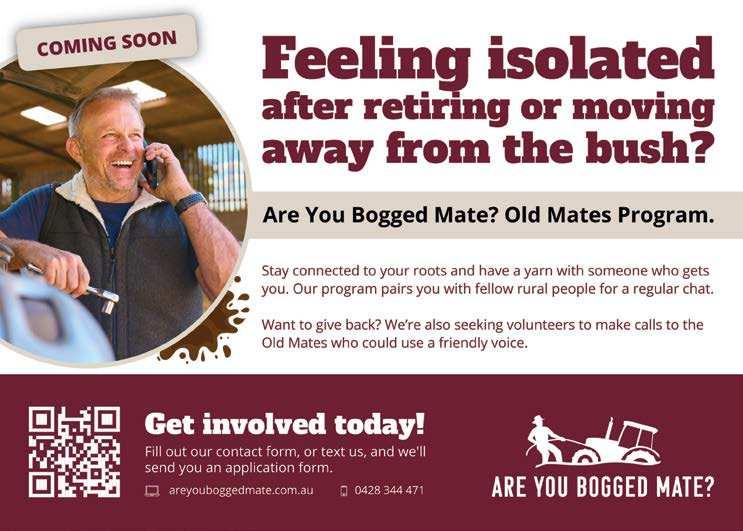
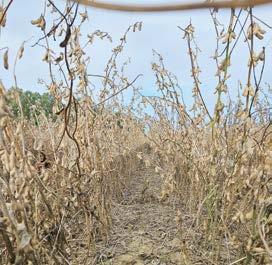
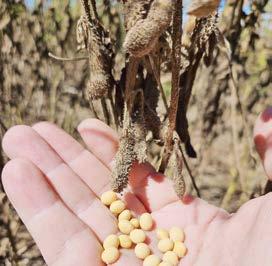

Dollars and durability are big reasons why farmers on the eastern seaboard of Australia continue to make soybeans their summer crop of choice, according to the peak industry body.
Soy Australia said it believed, after a challenging 2023/24 summer season in many key growing regions, soybeans had presented as a reliable crop choice for growers seeking a crop that would handle the vagaries of the weather.
“When it comes to summer crop options, our growers are chasing a crop they can be pretty confident will still be alive – and worth harvesting – at the end of the season,“ said Soy Australia’s industry development officer Judy Plath.
“Soybeans continue to prove they are a tough crop for our tough Aussie climate.”
Mrs Plath, an agronomist working with Soy Australia to support the development of the Australian soybean industry, also farms with her husband, Jeff at Childers, south of Bundaberg in coastal Queensland.
“The 2023/24 summer season was pretty challenging in many of our key growing regions,” said Mrs Plath. “Excess rain, high humidity and high temperatures put the crops under a lot of pressure and resulted in extra insect and disease pressure for some regions.
“In fact, Soy Australia had to seek emergency use and minor use permits for a number of pesticides during the 2023/24 season to ensure growers had control options for the unusually high pest and disease pressure experienced in some regions.
“Fortunately, Fall Army Worm (FAW) was not one of those unusual insects. We only received reports of two soybean crops throughout all of Queensland and New South Wales where FAW were seen.“
According to Soy Australia, in some growing regions where growers had maize and soybeans on the same farm they spent much of the summer battling FAW in the maize, while the soybeans were far less appealing to the destructive grub.
“It was the weather that tested a lot of crops this season,” said Mrs Plath.
“The wet, humid and often overcast growing conditions experienced for extended periods in some regions had an impact on crop health, but the soybeans grew on regardless and, in some cases, produced higher than average yields.
“It just proves what a tough crop soybeans are. There’s not many other crops that are so durable during tough weather conditions.“
According to Soy Australia, disease pressure in wet seasons such as 2023/24 could see more growers using fungicides in their soybeans as a preventative management strategy.
“The strategic use of fungicides could become more common if we have another wet year like we’ve just had.
“We probably should start thinking of fungicides as a management tool we may need to use from time to time.
“The other big reason many growers choose soybeans for their summer crop is because they are such a great legume rotational crop.
“Soybeans break the pest and disease cycle for
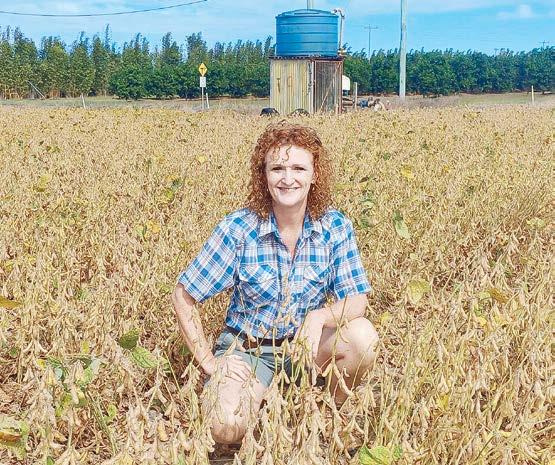
a lot of other crops, they return excellent amounts of organic matter to the soil and, of course, are a fantastic source of free nitrogen thanks to nitrogen fixation.
“In fact, 2013 research by NSW DPI shows soybeans are the best nitrogen fixing legume when compared to peanuts, mungbeans, chickpeas, lupins, faba beans and field peas.“
Regional Round Up
According to Soy Australia, in the far north of Queensland, growing regions like Ingham and the Burdekin experienced the extreme wet conditions of the monsoonal season hitting their soybean crops, with most crops surviving and harvested.
In fact, according to Townsville-based DAF Agribusiness Development Officer Brock Dembowski, most soybean crops in the region were
at mid- to late pod fill when a flood hit in March this year.
“The Grain in the Rain project, running for its fourth consecutive year, encountered one of the largest floods to date with 200mm measured in March this year,” said Mr Dembowski.
The project is jointly funded by DAF and the Hinchinbrook Shire Council.
“I was really impressed to see how well the crops recovered from having three quarters of the plant under water,” said Mr Dembowski.
“We were a bit concerned how the quality of the flooded soybean seed would be affected but were pleasantly surprised to see the seed was of excellent quality at harvest.
“I’m pretty sure the use of an integrated pest management program helped to ensure the soybean pod was intact and without insect damage,
which prevented the flood water from entering the pods during the flood event.“
According to Mrs Plath, in the Burdekin region of North Queensland, some soybean crops suffered through the monsoonal season yet still went on to produce some impressive crops.
“I’ve heard reports of four tonnes per hectare and better yields being harvested off those extremely wet paddocks with many crops being of excellent quality and high in protein.
“Unfortunately, the relentless wet conditions in some areas meant some growers struggled to get their soybeans planted and they missed out on a crop this season.
“Mackay, for example, had a much smaller planting than in previous years due to growers simply being unable to get on the paddock during the planting window.“
Now in their 34th year, the Export Awards recognise Queensland businesses for their innovation, resilience and determination as they strive to grow and expand their global footprint.
King River has been named Regional Exporter of the Year at the Export Awards.
King River’s attention to detail is evident in every stage of the paddock to plate process, with refined Wagyu breeding and genetics underpinning the King River experience.
With a vision to share this experience globally, King River Wagyu can now be enjoyed in more than 30 countries.
Premier Steven Miles said the Queensland Export Awards are an acknowledgment of every single business and exporter’s hard work in putting our state on the world stage.
“Exports are the engine of this economy. We are a trading state,” Premier Miles said.
Queensland was the first state in Australia to introduce a First Nations category in 2023 and continues to recognise Women in International Business in a dedicated category.
Sobah Beverages, maker of non-alcoholic craft beer, took out the First Nations category while Dr Tracey Seipel, CEO, Seipel Group was awarded the Women in International Business category.
The 13 national category winners will now represent Queensland at the Australian Export Awards, hosted by Austrade, on 20 November in Canberra.
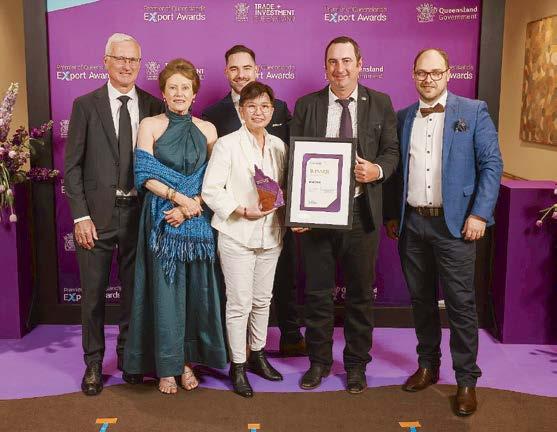

Do you have a story to tell, new projects to talk about or just simply highlight an achievement....
Fiona Gowers | E: fiona.gowers@queenslandfarmertoday.com.au
Breanna Lloyd | E: breanna.lloyd@queenslandfarmertoday.com.au
For all your classified and advertising enquiries, contact our team.
Jane Lowe
P: 0408 488 609
E: jane.lowe@queenslandfarmertoday.com.au
Samantha Wantling
P: 0439 420 289
E: samantha.wantling@warwickstanthorpetoday.com.au
Cindy Unwin
P: 0408 281 861
E: cindy.unwin@cqtoday.com.au
Daniel Pelcl
P: 0408 956 830
E: daniel.pelcl@burnetttoday.com.au
Classified Advertising
Sharon Jones
P: 07 4182 0451
17,000 copies published. Inserted into the following newspapers:
• South Burnett Today
• Central & North Burnett Today
• Warwick Today
• Stanthorpe Today
• Leader Today
• Jimboomba Today
• Beaudesert Times
• Emerald Today
• CQ Today
• Goondiwindi Argus
Also available from the follow outlets:
• Hartleys Newsexpress Toowoomba
• Roma Sale Yards
• Warwick Sale Yards
• Highfields News & Post
• Pittsworth Newsagency
• News Extra Central City
E: sharon.jones@burnetttoday.com.au Next Edition out on August 29, 2024

By Erle Levey
“Our dream for years was to have space for our children to grow up, teach them the basics of life and give them an understanding of how our food is grown … not found in a packet from the supermarket.’’
Now that dream has become a reality for Hayley and Dwayne Deans at their Kybong property, Woollahra Homestead.
Woollahra is the meaning for meeting ground or a sitting down place. That is where I caught up with Hayley on a sunny mid-winter morning to discuss their vision for this special piece of the Mary Valley.
It is such a tranquil setting - tall gum trees, the gentle slope of the land rising to steeper terrain on either side of the valley.
I felt this was probably where the Traveston Dam was going to be located.
“I think the dam wall was going back over this side,’’ Hayley said, “but we are more in the overflow area.’’
Woollahra Homestead is a 40-acre farm practising regenerative farming methods.
The intention is for it to be a place to connect with nature, to provide a farm stall and paddockto-plate experience.
Hayley and Dwayne have been on quite interesting and diverse journeys that brought them to Woollahra.
“I grew up on a farm,’’ Hayley said. “My grandparents and my dad had land at North Arm, and then we sort of separated from that and went into a little bit more of suburbia.
“Our dream was always to have some sort of land for our kids.
“I always sort of have loved gardening - I’ve always had a very green thumb, like my dad, and had a dream of something like this.
“We had sold our home at Mt Ninderry and were looking for another place to buy. It was during Covid and we were getting desperate because you couldn’t find anything.
“Then my husband saw this place and he said that it has lots of potential. Yet I was thinking: ’I will not be going here’.
“I dragged my feet but as soon as we opened up the door I thought, this place actually does have potential ... but I wasn’t going to say that.
“Then, a week later, we decided to go ahead. And I’m so glad we did.’’
While the property slopes to the north, there is a lot of flat land and even what’s up the back of the house and shed is not unmanageable.
“The fellow who owned the land was a cattle farmer,’’ Hayley said, “and he had a station out west, so this was a holding property for some of his stock.
“We basically put an offer in. It got accepted, we moved out here, and then we started planning.
“The first thing that went in was the dam down there.’’
It’s where they are establishing an on-property camping area.
The property is on Traveston Creek which runs part-way around the boundary.
“Basically everything you see, we have established,’’ Hayley said, “except for the stock yards that are up here.
“I am very passionate about our environment, especially where food is concerned - how

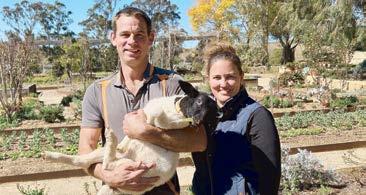
it is grown, and the future of my children and my grandchildren.
“We are focussed on organic or regenerative farming. We don’t use any chemicals on this farm.
“It’s a lot of labour but we produce our own compost out the back and have a worm farm.’’
Hayley and Dwayne use their cattle for the composting. They are an important part of the process because of the way their digestive systems work - the manure is so full of goodness.
One of the best ways to improve agricultural sustainability is by developing and using effective ruminant livestock grazing systems.
“We use that in our composting and on our gardens as well,’’ Hayley said. “We are at the stage where I can’t do it all.
“We need to be able to expand as there are other projects we have in mind. It is then we will have to get people to come in and help.
“The vision is to expand our gardens because we grow cut flowers as well. We’re doing combinations of flowers and vegetables.
“We’ve orchards scattered around everywhere, and we’ve also got a section down the back which is for ’ugly things’ like potatoes, pumpkins, vines and all that kind of stuff .
“We want to show people - especially younger generations - that we can farm using the old methods successfully without having to use all the pesticides.
“We want to educate children that our food isn’t grown in a packet in a supermarket.
“That it’s something you can do at home because I feel all the families have got a backyard or a little farm.’’
That is a way to help change they way we have been treating the soil - having it open to degradation of nutrition as well as erosion.
“We need vegetation or cover crops to keep the nutrients in there - or that soil structure - because every time you plough over it you lose the structure and the microbials. They need the moisture.
“We would like to eventually help children understand how important worms are and how it all starts with the soil ... from the ground up.’’
Woollahra Homestead has about 16 droughtmaster cattle crossed with angus, and a couple of purebred angus. They also have a few dorper sheep. Hayley attributes much of her interest in farming and gardening to her grandmother.

“Helen loves gardening and my dad Tony is a big green thumb. My mother-in-law Carol is also an avid gardener ... she helps me out a lot in the garden.’’
Dwayne was born in Tauranga, on New Zealand’s Bay of Plenty, and is a marine engineer by trade. He moved to the Sunshine Coast at age four, and lived at Mooloolaba. That is where he moved into the marine engineering side of things.
Dwayne works from home and does boat building, also a lot of fabrication and that includes manufacturing car parts.
“We had a building company - Superior Built,’’ Hayley said. “We did a lot of our own homes and were entered in the HIA building awards.
“I have a background in building and as a designer. We built this place ... hopefully it’s our last one.’’
Walking through the gardens, Hayley said that basically everything you see has been planted by her. Everything is symmetrical, the garden plots raised slightly, the edging is precise and sustainable. They will be looking at retaining water on the property. There are some areas down the hill they will plant flowers and crops to slow the run-off.
As well as establishing a farm-gate flower and vegetable outlet they will take the produce to community markets but also use the flowers for weddings and parties.
“We’ve had a few days where we opened up pop-up stalls here on the farm and we were overwhelmed,’’ Hayley said.
“Every time we’ve done that, the number of people that came in meant we sold our produce that we also turn into either relishes, sauces or something like that.
“There’s nothing like a fresh-picked lettuce and herbs.
“I had garlic in every single bed at the start but the consistent rainfall in the past couple of years proved too much. So I’ve had to go back to start from square one again.
“We are trying to make it local garlic instead of from overseas. People generally want local food ... to experience the agriculture, the local cuisine.’’

“Localised produce serves as a reminder that food is to be shared and enjoyed.
“We’re trying to support everyone in this area, and if we are low on the produce that we are growing then we utilise other local produce.
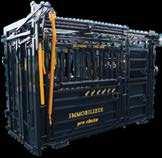

“This area has so much potential.’’
The garden includes carrots, tomatoes, lettuce, cucumbers, beetroot, radish, pumpkin, sweet potatoes. The blossoms are already on the peach trees, and there are also citrus trees, apples and figs. What Hayley has learned so far is that farming can be challenging.
“It is hard work. By fighting against nature you will never win. You need to work with it.
“We’ve got a lot of roses ... more than 120 plants.
“There have been a lot of aphids but we went for beneficial plants as companion planting to create beneficial insects.
“They moved in, and cleaned up all the aphids. We let them do their thing instead of spraying.’’
“There are beneficial plants underneath the foliage and flowers. They attract the beneficial insects.’’
When Hayley and Dwayne moved to Woollahra there was virtually no wildlife because dogs had been on the property before that. Since then the wildlife has moved back. There are koalas that come and go, and there is a variety of birdlife - king parrots, different types of kingfishers - that are all doing their part.
“We’ve got bees,’’ Hayley said. “We produced some honey last year - it tasted amazing because of all the blossoms.
“It’s great to see the amount of pollination we’ve got. There’s native bees as well.
“When we came here there was barely any pollination so we put a beehive out the back in our orchard.
“We’ve had so many setbacks - we’ve had hail that wiped out nearly all of our garden.
“We’ve had bugs. We’ve had birds, we’ve had hares, bandicoots. We’ve had everything, so everything has set us back.’’
Even so, Hayley’s biggest tip is patience and perseverance.
“Just work with nature. We just keep going. I think the biggest thing is not to give up.
“A lot of people would give up once you’ve done it four, five or six times over.
“There has been flooding, drought - so many things have happened in this region in a short space of time. We could have given up.
“There have been cows that got into the orchard, horses that have escaped and eaten all of our stuff. You know, just things like that.
“But I’ve kept persevering and then you see the rewards. In a few months time this place is going to be absolutely covered in colour and produce ... and it’s going to be awesome to sit here and be able to look at all the hard work.
“We have an amazing slice of paradise that we would like to share with others.
“From the moment we purchased our farm to now, let’s just say it’s unrecognisable - we certainly have added our touch.
“Our farm is regenerative, uncertified organic with great diversity, the way all farms should be. It’s hard work starting as a learner and after years of reading and reading we are finally progressing. It’s extremely rewarding knowing that what you are eating is the best it could be, all starting from the ground up.’’
Hayley and Dwayne’s philosophy and vision is something we could all aspire to.
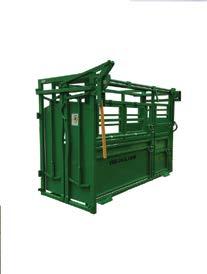
A way of life that is defined more by a sense of health and community rather than convenience.

Report Date: 18/09/2024
Saleyard: Casino
There was little change in the number of cattle yarded for a total of 1,078 head, consisting of a good supply of young cattle and there was a fair penning of cows. The yarding of young cattle consisted mainly of weaners, along with a few pens of yearlings. Quality was mixed, although there was a few more well bred cattle through the sale.
The market varied according to quality, however most sales of cattle regained last weeks loss. Restocker weaner steers sold from 276c to 418c, while restocker weaner heifers sold from 204c to 348c/ kg. The yearling steers ranged from 305c to 374c with most going to restockers and backgrounders. Only a few yearling heifers and they sold to 284c/ kg.
There was increased numbers of grown steers yarded with several pens of heavy weights sold. A buyer absent from the market this week resulted in prices being down by 10c to 15c with most steers selling from 310c to 330c/kg. Grown heifers sold to 308c/kg. The cow market varied with prices ranging from firm to 10c cheaper for heavy cows. Medium weight 2 scores sold from 232c to 260c and 3 score medium weights averaged 269c/kg. Heavy 4 score cows sold from 277c to 297c, with a pen of young heavy cows reaching a top price of 309c/kg. Heavy bulls sold to 294c/kg.
Report compiled by Doug Robson Report Date: 18/09/2024
Saleyard: Dalby
Following three weeks of declining numbers the supply of stock at Dalby increased by 1,004 head to 5,622. Buyer representation across all classes was good and included southern export processors and all were operating in a firm to dearer market.
Light weight yearling steers and heifers returning to the paddock averaged 12c to 14c/kg better. Medium and heavy weight yearling steers to feed experienced very little change in price. A lift in the standard of the medium and heavy weight yearling heifers to feed improved average prices by 4c to 12c/kg. A good lineup of cows were firm to 5c to 6c/kg dearer. Heavy weight bulls also sold to a market 5c/kg better.
Light weight yearling steers returning to the paddock made to a top of 446c with a good sample averaging 403c/kg. Yearling steers to feed for the domestic market averaged from 376c to 382c with sales to 392c/kg. Heavy weight yearling steers to feed made to a top of 398c with a large number averaging 374c/kg. Light weight yearling heifers returning to the paddock made to an isolated 350c to average 295c/kg. Medium weight yearling heifers to feed made to 354c to average 330c, and heavy weights averaged 325c and made to 352c/kg.
Heavy grown steers and bullocks to export processors made to 355c with most in the mid-340c/ kg range. Medium weight 2 score cows averaged 257c with sales to 276c/kg. Heavy weight 3 score cows averaged 286c and the best of the heavy weight cows made to 321c a fair sample at 312c/kg. Heavy weight bulls made to 323c/kg.
Trevor Hess, Market Reporter


Report Date: 17/09/2024
Saleyard: Roma Roma agents yarded 6,528 head. Cattle were drawn from the large supply area including N.S.W. All the regular processors feedlotters and backgrounders active. A mixed quality yarding penned however the market is firm to slightly dearer. With heavy feeders in strong demand also heavy bullocks and cows were well sort after.
Light weight yearling steers under 200kg topping 440c/kg. Yearling steers 200 to 280kg sold from 304c to 430c with the 280 to 330kg selling to 408c/kg. Yearling steers 330 to 400kg also sold to a stronger demand with a large number selling to 410c/kg. Yearling steers 400 to 480kg also sold well to 394c/kg. Yearling steers over 480kg also improved and sold from 330c to 406c/kg.
Lightweight yearling heifers under 200kg topped 298c/kg. Yearling heifers 200 to 280kg sold from 202c to 338c/kg for the better lines. Yearling heifers 280 to 330kg improved in price by up to 18c/kg and sold to 344c/kg. Yearling heifers 330 to 400kg topping 336c/kg. Yearling heifers 400 to 480kg also topping 340c/kg.
Grown steers 500 to 600kg selling from 310c to 345c/kg. Grown steers 600 to 750kg topping 349c/kg. Grown heifers over 540kg 329c/kg.
Approx 1,100 cows penned which sold to stronger market. The 2 score cows selling from 200c to 275c/kg with the 3 score cows selling from 276c to 334c/kg. The best of the heavy weight bulls sold to 323c/kg with the younger bulls under 600kg selling to 270c/kg.
David Friend, Market Reporter
Saleyard: Warwick Warwick agents penned 1161 cattle down by 241 head. The regular processors and feeder buyers attended along with local wholesalers and restockers. The yarding lacked the quality of last week and was reflected in the prices recieved for the yearling steers however the yearling heifers sold to dearer trends as did the bullocks and heavy cows.
Yearling steers in the 200-280kg range to background sold to 370c and averaged 347c/kg. Yearling steers over 280kg to restockers made 400c to average 362c/kg. Yearling steers to feed for the domestic market made 380c to average 354c/kg. Heavy yearling steers to feed sold to 370c and averaged 348c/kg. Light weight yearling heifers to background made 312c to average 301c/kg.Yearling heifers in the 200-280kg range to restockers sold to 298c/kg with those over 280kg at 330c to average 277c/kg. Medium weight yearling heifers to feed made 335c to average 301c/kg. Heavy yearling heifers to feed sold to 340c and averaged 319c/kg with the wholesale meat trade paying to 349c/kg.
Grown steers to feed made 360c to average 352c/kg. Bullocks to processors sold to 358c and averaged from 349c to 355c/kg. Grown heifers to processors made 325c to average 317c/kg. Light weight plain cows to processors made 250c to average 227c with those to feed at 240c/kg. Plain conditioned heavy cows to processors improved by 5c and sold to 261c and averaged 254c/kg good heavy cows also gained 5c and sold to 315c and averaged 305c/kg. Light weight bulls to restockers made 330c to average 328c/kg. Heavy bulls to processors made 335c to average 315c/kg.
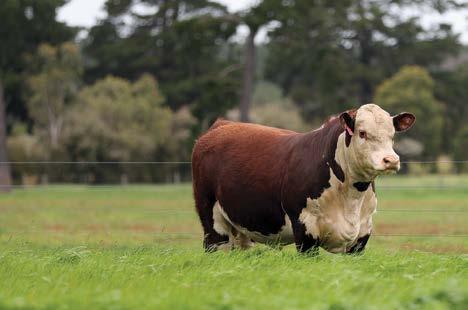
Errol Luck, Market Reporter
SHEEP Report Date:
Saleyard: Warwick
Agents at Warwick penned 1439 lambs an 895 grown sheep. The overall yarding contained very good runs of well finished lambs and mutton which sold to rates similar to last week however new season lambs to the wholesale meat trade sold to dearer trends. All the regular processors and feeder buyers attended and competed strongly on lines that suited their orders.
Very light young lambs to restockers sold from $52 to $58/head with those over 12kg to the wholesale meat trade at $90 to $108/head. New season lambs in the 18-22kg range to the butcher trade sold from $152 to $201/head. Light weight older lambs to restockers sold from $34 to $60/ head. Lambs in the 18-20kg range to feeder buyer sold from $80 t $138/head. Light weight trade lambs to the butchers sold from $150 to $168/ head. Ideal lambs suited to the wholesale meat trade sold from $170 to $220 with heavy lambs to processors at $226 to $231/head.
Light weight hoggets to restockers sold from $68 to $88/head. Heavy hoggets to processors sold from $100 to $157/head. Light weight ewes to processors sold from $40 to $72 with the heavy ewes at $80 to $110/head. Crossbred wethers to processors sold from $71 to $119 with dorper wethers at $113/head. Ram lambs to the wholesale meat trade sold from $115 to $174/head. Rams to processors sold from $113 to $130/head. Errol Luck, Market Reporter
Prep time: 10 mins
Serves: 4 people (25g nuts per serve)
Ingredients
· 2/3 cup peanuts, roughly chopped, plus 2 tbsp extra, roughly chopped
· 50g dark chocolate, roughly chopped, plus 25g extra, finely chopped
Method
· 1 tsp cinnamon · 1/3 cup fresh dates, pitted · 250g reduced-fat cream cheese, softened
1. Combine 2/3 cup peanuts, 50g chopped dark chocolate and cinnamon in a small food processer. Blitz until the texture is like crumbs. Add dates and blitz until well combined.
2. Divide mixture into four even pieces and flatten each into a round disc. Clean out the food processor.
3. Combine cream cheese, banana, peanut butter and vanilla bean extract in the food processer, and blitz until smooth.
4. Spoon or pipe cheesecake mixture evenly on top of the four peanut ‘bases’, and garnish with remaining dark chocolate and peanuts.
Tips
· Opt for fresh medjool dates instead of packaged dates, to ensure the ‘biscuit’ base is perfectly sticky and holds together. You can typically find these in the fruit and veg section of your local supermarket!
Recipe developed by Sprout (https://sprout.edu.au/) for Nuts for Life

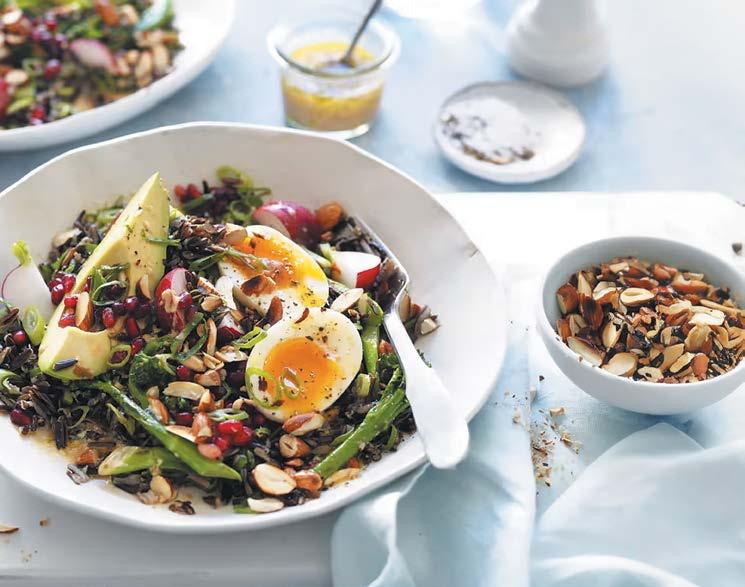
Prep time: 5 mins
Cook time: 55 minutes
Serves: 8 people
Ingredients
Salad
· 150g wild rice
· 4 eggs
· 1 tablespoon olive oil
· 1/4 cup (65g) whole raw almonds
· Salt and pepper to taste
· 2 bunches broccolini, ends trimmed
Method
1. Cook wild rice according to packet instructions. Drain and set aside.
2. Cook eggs in a saucepan of boiling water for 5 minutes or until medium soft. Remove and cool immediately with cold water to stop cooking. Peel and set aside.
3. Meanwhile, heat oil in a nonstick frying pan over mediumhigh heat. Add almonds and pinch of salt and toss in hot pan for 1-2 minutes or until toasted. Transfer to plate and coarsely chop once cooled.
4. Cut broccolini into bite size pieces. Cook in the same pan as the almonds were toasted in, until lightly charred and just softened. Remove and set aside.
· 5-6 red radishes, trimmed and cut into wedges
· 3 green onions, sliced
· 1 small pomegranate, seeds removed
· 1 ripe avocado, peeled and quartered
Dressing
· 2 tbsp red wine vinegar
· 2 tsp Dijon mustard
· 3 tbsp extra virgin olive oil
· Salt and pepper to taste Recipe courtesy of Australian Eggs
5. To make the dressing, whisk red wine vinegar, mustard, and season to taste with salt and pepper. Drizzle in olive oil and mix well.
6. Combine wild rice, charred broccolini, radish, green onion, almonds and pomegranate in a large salad bowl. Pour over half the dressing and toss gently to coat.
7. Cut eggs in half and arrange over salad with avocado. Drizzle over remaining dressing. Serve immediately.
Tips
· Wild rice, broccolini, eggs, almonds and dressing can all be prepared a day ahead and refrigerated separately.
· Wild rice can be cooked in a rice cooker.
· Substitute wild rice with black rice or brown rice.

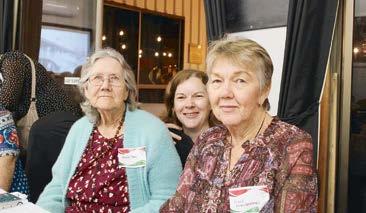
By Breanna Lloyd
Since its inception in 1974, the Nebo State School and its hundreds of past, present and future students celebrated their school’s 150th anniversary on 13 and 14 September.
With 103 students from Kindy to Grade six and a dedicated team of 16 staff members, including seven teachers, six teacher aides, a business manager, a cleaner, and a groundsperson, the school has become a cornerstone of the Nebo community.
The celebration brought together families and friends, with 125 attendees at the Friday night dinner and around 350 joining the festivities on Saturday.
The two-day event featured a night of reminiscing, with Councillor Viv Coleman serving as MC, and culminated in an official ceremony led by Principal Leanne Noble, followed by a Fun Fair showcasing the school’s vibrant history and community spirit.
Attendees enjoyed displays that highlighted the current curriculum, as well as historical documents and photographs, with many visiting the local museum to explore the town’s rich heritage.
School teacher aid and librarian Louise Cook believes it’s important for the school community to recognise this significant milestone.
“The school gives our community a sense of pride and belonging that stretches back 150 years,” she said.
“This milestone shows how our school is not measured in just academic success but the strength of our community.”
The celebration also included the unveiling of a new time capsule, designed and fabricated by local businesses Maverick Welding and Salmon Earthmoving.
The capsule contains artwork and writings from current students, along with flags, uniforms, a 150th-anniversary book, and memorabilia from the celebration.
The original time capsule from 1999, filled with past students’ writings, pictures, handprints, and flags, was also showcased.
“I am proud of every person who shared their time, advice, photos, and memories,” Louise said.
“I am proud of every student who produced work to showcase, students who made speeches on the day, and every staff and P and C member who put their everything into making the last two days something that our school and community could be proud of.”
Looking back on the event, Louise said it was a fabulous success.
“Many people enjoyed the day filled with history, stalls, food, and entertainment,” she said.
“We have received lots of feedback already from those who attended and those who couldn’t make it but have heard from those who did.”
Looking to the future, the milestone celebration signifies the enduring impact of the school on the community.
“Celebrating this milestone shows the impact a school can have on a community,” Louise said.
“It highlights where we started and where we are headed for the next 25 years.”
While the planning and execution of such a significant event came with its challenges, Louise expressed gratitude for the dedicated members, sponsors, and donors who made it all possible.
“Planning a community event like this always comes with challenges in a small town, but we are very thankful for those who have gone above and
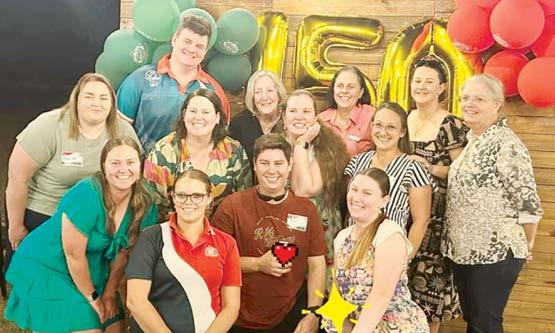

beyond,” she said.
As the community reflects on the past and looks forward to the future, Nebo State School stands as a testament to the strength and spirit of its people, a beacon of pride for the community as it embarks on the next chapter of its storied history.
Nebo State School History
On July 1, 1874, a provisional school opened in Nebo with 27 students enrolled.
By 1875, it had officially become a state school.
During the period between 1875 and 1884, the school experienced several interruptions due to a lack of teachers, with some gaps lasting from 3 to 6 months. In 1875, the school’s first teacher, Mrs.

Dwyer, was dismissed, leading to a temporary closure of the school.
In 1876, the school reopened under a new teacher, who expressed dissatisfaction with the existing facilities. Historical records describe the school as operating out of a cottage that lacked a floor, windows, and a water supply. By December 1881, the school had officially closed due to a drop in student numbers but was re-established as a provisional school in May 1882. As the local population grew, so did the enrollment numbers, prompting the construction of new demountable buildings.
On August 31, 1888, a letter was sent to the Board of Education requesting a new bell to replace the old, cracked bullock bell. The request
was approved, and a new bell was shipped by steamer in October 1888. For nearly a century, the bell was a central feature of the school, even ringing to announce the end of World War II to the town.
Unfortunately, in 1964, the Department of Works sold the bell for one pound after discovering that the pole it was mounted on was rotting. It wasn’t until 1974 that Mr. Doherty, the then-principal, learned about the bell’s history. He tracked down the bell, which was then at Blenheim Station. With the support of Blenheim Station’s owners, the bell was returned to the school and was put back into service on October 1, 1974. Today, the historic bell continues to ring every school day to signal the start of classes.
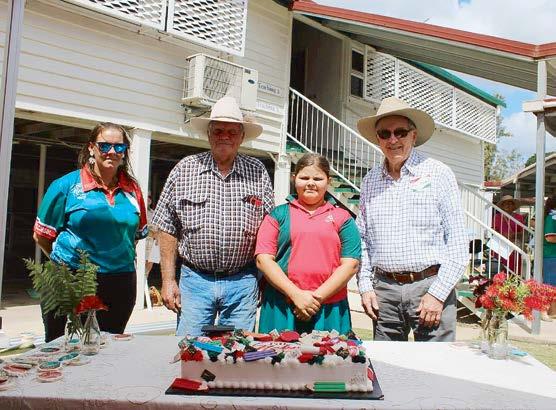
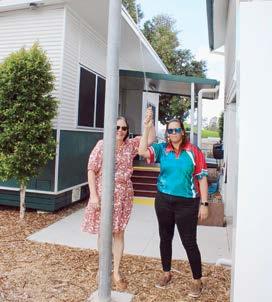




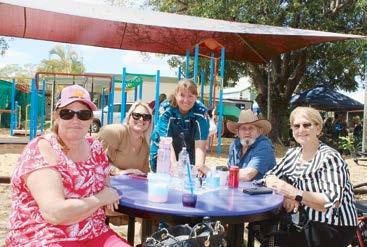
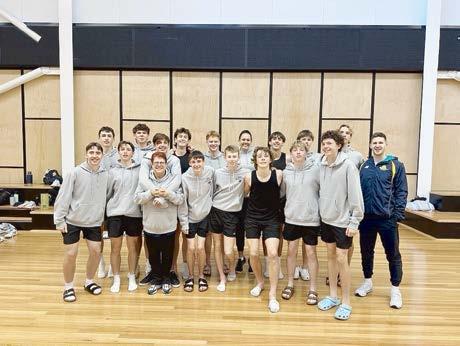
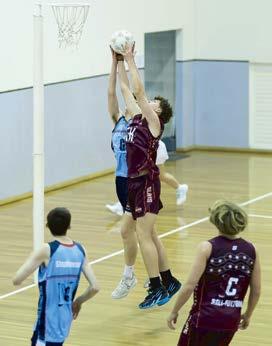
By Gladys Barreta
Netball has long been played predominantly by women, but the rise of men’s netball has seen young stars like Max Carson shine under the spotlight.
Only two years into playing, Max has already made a name for himself recently announced as one of the finalists in the 2024 Netball Queensland Awards for Rising Sun.
At 17 years old, the defender juggles the demands of his year 12 studies and travels weekly to Brisbane, training for the Nationals Competition in April 2025.
When he was just 10 years old, Max relocated to Dalby from Brisbane where his mum, Fiona Carson, grew up.
From tagging along to the games his mum played, Max eventually learnt to understand how netball was played.
“I grew up watching my mum who has played forever, for as long as I’ve been alive.
“They needed a fill in, in her women’s league so I played for one game and slowly started filling in more, and it grew from there.
Being a visual learner, Max says he learnt the art of playing his main positions as goal defender and goal keeper from watching games.
“Mum has gone through every position through her lifetime so she’s very versatile,” Max said.
“My mum and a teacher at my school are my biggest influencers who have taught me a lot of what I know today.
“I knew the concept of the game from watching but as I started playing, I learnt the rules more and more.”
For Max, netball was a hobby at the beginning, and it wasn’t until his first state competition in April 2023, playing for the Darling Downs Stampede where he fell in love with the sport.
“That was my first time playing in an all men’s netball competition and it was my first time playing on a team that wasn’t mixed.
“I’ve found that all men’s netball is a very different play style with a lot more aerial, jumping and sometimes can be more physical.
“There’s not a lot of a following from young boys playing netball but it’s slowly growing in regional towns like mine and there’s definitely a lot more playing in the cities.”
The sport is still in its early stages in regional Queensland but the growth seen in men’s netball in the Darling Downs has definitely been significant over the last few years.
“It was the Tuesday and Thursday night leagues when I started playing about two years ago, I was one of the only boys playing in the whole league.
“Now there is a mix of boys and girls playing
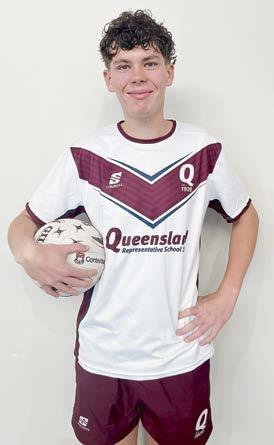
and it has grown a lot in a short time in my town.
Max has come a long way, only playing his first proper game of netball in 2022.
His potential and talent in netball has not gone unnoticed, being recognised as a Rising Sun at this year’s Queensland Netball Awards.
“It means a lot to be recognised in the awards especially because this year was my first appearance at nationals.
“The amount I’ve achieved with the Australian squad has really grown my love for netball and it just keeps getting better.

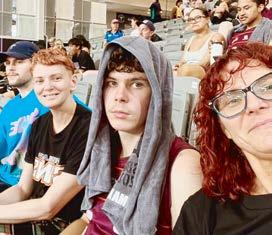
“Being a finalist in the awards is definitely a sign to keep going and keep playing.”
Max currently plays for multiple teams, his regional team, the Darling Downs Stampede and for the Queensland Suns where he made the u17s team last year in October.
Max played in nationals this year where an Australian squad was selected to play for the Oceania Netball competition in New Zealand this December.
He was announced as a training partner, meaning Max will train with the Australian squad
to learn the strategies and the set ups, just in case he is pulled in to play in the competition.
While training takes up a lot of Max’s time, he also puts a great amount of energy and effort aside to finish his year 12 studies and plans to move to Brisbane after he graduates.
“There is so much more opportunity in Brisbane for netball and I am hoping to do much more with it.”
“I see netball becoming more and more prolific in my life in the future.”

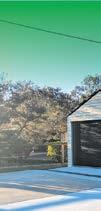























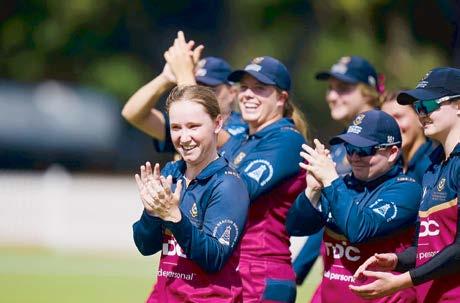
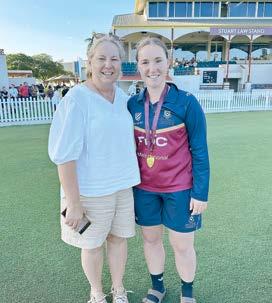
By Gladys Barreta
From the young age of six years old, Emma Jackson and her brothers were kitted up with their flannels and had their bats and balls in hand.
Watching and admiring her older brothers play cricket ignited Emma’s love for the sport.
Condamine born and bred, the 22-year-old currently plays for the University of Queensland in the Premier League and is working towards representing Queensland Country for the State League in the January 2025 competition.
She kickstarted her career in Condamine playing for the local cricket club in her early years.
Emma slowly climbed her way up and found herself playing in Toowoomba for second grade at 15 years old then eventually in Brisbane for the Premier League at just 17 years old.
“The local cricket club was a small club that everybody in the region played for,” she said
“It was always great fun.”
Emma would accompany her older brothers to play cricket when she was young and thought she would give it a go.
“When I was younger, I used to watch my brothers and see what they could do and hope I could do the same thing.”
“My brothers played at Condamine and I was getting dragged along so I thought I might as well play.
“They are pretty supportive and they always watch my live streams and keep up with the scores.
“They are pretty much my inspiration and the ones who got me into it. Eventually they stopped playing cricket and I kept going.“
She said she’s always played cricket for the enjoyment and the journey it has taken her on throughout her life.
“It’s a nice sport to play and I get outside in the sun.
“It is very enjoyable when you get runs and it feels like you’ve achieved something and you make lifelong friends as well.“
Emma currently juggles studying full time in Sunshine Coast completing her Bachelor of Environmental Management as well as training weekly.
She travels to Brisbane to train at UQ for three hours once a week and games on the weekends.
Although a good chunk of her life is dedicated to cricket and at her young age, Emma has already achieved a lot for her sporting career but she said focusing on her studies is the main priority.
“I enjoy it at the moment and I will keep going while I can or while my body holds up,“ Emma said.
“At the moment I am prioritising study because it is so hard to get into cricket.
“I can’t just drop everything and hope for a contract, but at the moment I am going to focus on my studies to get a good job.
“I am hoping to look into regenerative waterways and how I can revitalise the eco system.“

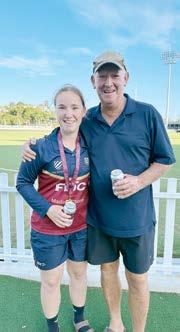
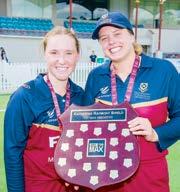

“Growing
The Rio Tinto Rugby Talent Combine perfectly hit the mark in Gladstone last month by casting the net far and wide to attract talent from country Queensland.
It’s not until you see how valuable opportunities like this are in a regional centre that you realise these initiatives hit the mark on multiple levels.
It wasn’t just teenage girls from Gladstone who made the trip to Marley Brown Oval. Aspiring players from Blackwater, Rockhampton, Gympie and the Sunshine Coast turned out.
And then there was Bella Afutoto Leaegailesolo. Her father Viliamu shared Father’s Day with his daughter by driving her four hours from Emerald to be at the Talent Combine.
“It’s just so valuable to have a combine like this creating an opportunity in rugby for girls in regional Queensland that they might not otherwise get,” said Councillor Leanne Patrick from the Gladstone Regional Council.
“We have all seen our girls and women achieve so much at the Olympics and in the footy codes. A partnership like this between the Queensland Reds and Rio Tinto enables country girls to believe their dreams have a pathway to come true as well.”
In all, 16 teenage girls were measured over a 40m sprint, a 1.2km time trial and a countermovement jump plus rugby-specific drills like catch-and-pass, three-on-two decision drills and tackling.
The progress of a selection of girls will be tracked from here.
“It’s great to see the enthusiasm amongst the girls. This is how my journey in rugby started at a combine in 2019 and it’s already taken me to places I never would have imagined,” said Gladstone’s Sophie Duff.
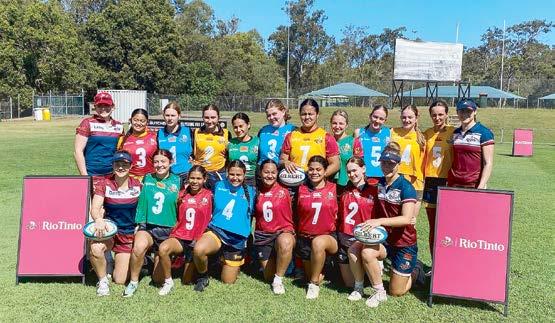
Duff, 21, returned from Brisbane to Gladstone to be involved in the Talent Combine. She shared the story of her path to the Queensland Sevens team and the opportunities it has given her to play in France, Fiji, Japan, New Zealand and Dubai.
The Talent Combine was overseen by Lachlan Parkinson, the national talent development manager for Sevens, Mari Belessis, a Reds Sevens Elite Squad coach and Nico Andrade, the QRU women’s high-performance manager.
489.76 ha - 1210.2 ac (approx.) 1612 Broadwater Rd, DUCKLO via DALBY Auction: BMO Dalby 11am 31st October 2024
• WIWO Opportunity- Hereford Cows, calves heifers and farming plant
• Secure water with 3 good sized dams, all fenced o
• Each is equipped with Windmill and Tank serving Numerous Troughs
• Secure boundary fencing all round- internal fences are good
• Whole property has good Qld blue grass cover+ seasonal herbage
• Lockable machinery shed with workshop- additional hayshed
• Area of established improved pasture and 45Ha of cultivation
• 3b/r cottage, timber yards, 2 stand woolshed
• 5 productive gas wells plus pipeline provides additional income Brock Simpkins 0408 278 818
“The three Talent Combines we have run with Rio Tinto this year in Townsville, Brisbane and Gladstone are just the start of creating more opportunities to progress into rugby’s high-performance pathways,” Andrade said.
The goals are tantalising with a 2029 World Cup for women on Australian soil and the 2032 Brisbane Olympics.
A community fan day ran parallel to the Talent Combine and drew nearly 50 kids of all ages from families connected to Rio Tinto.
Rio Tinto has poured more than $3 million into rugby during a positive partnership with the Queensland Rugby Union over more than a decade.
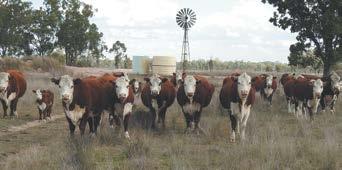

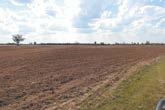
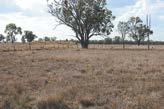
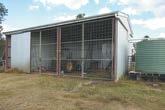
By Tania Phillips
Allora’s own bronzed Aussie Matt Denny is set to be honoured with a street parade in early October.
Three-time Olympian Denny took the bronze medal in the discus event at the Paris Olympics this past month and now his home town are set to celebrate him.
Allora Regional Sports museum head Perry Cronin said the town was planning the street parade for Friday, 4 October.
“We have started it all off and everything is locked in so we’re off and running, all we need is a fine day and a good crowd as far as I can see,” he said.
“We will start the street parade at the cricket ground and come straight down Warwick Street, turn into Herbert Street, the main street and in front of the museum there will be a presentation from the mayor and a couple of other dignitaries. Then we are having a big party over at the community hall.
“It will all start at 2pm.
“We’ve done all this before (after his fourth place in Tokyo) – exactly the same sort of thing – it will be a carbon copy of that. He’ll be in his uncle’s old Buick I’d imagine, open top. Probably his wife too, I’m not too sure, she didn’t join in until later on last time. More or less Matt on his own, we don’t want to take any gloss off him, he’s our medallist.
“It’s pretty basic but it’s a Friday afternoon so all the kids can line the route. The two schools will be involved and hopefully the young kindergarten kids will be there too. Last time we didn’t have to advertise to get a crowd because it was jammed-packed full of people, it was lovely.
“He has done us proud again. Actually, I should make a mention of Toowoomba Grammar they bring a bus load of kids down as well and do a walk right down the street. Matt went there for his senior years.”
Cronin said it will be his second visit home after the Olympics.
“He had a flying visit, but he didn’t do any socialising because he had to go straight back to Europe,” he said.
“It was just a quick, come home, kiss Australian soil and then off again, I think. I didn’t see him.
“But this will be great – a chance for him to spend a little time and see everybody.”
Though for some of those likely to line the streets, it hasn’t been long since they saw their Allora boy with a contingent of locals actually going to Paris to compete and ending up on National television as they cheered him on.
“They all got back ok – they had a great time apparently,” Cronin said.
“I talked to them, they had a wonderful time, they caught up with Matty there after he finished his competition, and it was all time for him. They had a ball I think.”
The trip back to Europe paid dividends, with Denny claiming back-to-back Diamond League championships, securing the victory with a stunning national record performance on the first night of the Wanda Diamond League finals in Belgium.
With a first-round attempt of 69.96m in the Men’s Discus, he became the hunted throughout the competition, the opposite of his victory from last year.
“I knew I was in really good shape, I thought that 70m was on the card tonight but you never know with changing conditions,” Denny said.
“First round was a nice one to win it, but what I’ve learnt winning last year and this year, is that I’d rather do it in the last round than the first round.
“It’s a lot more stressful to do it in the first round when you’re waiting for guys like Mykolas (Alekna, LTU) and Daniel (Stahl, SWE) and Kristian (Ceh, SLO) to finish out their comp and you don’t know if you’ve got it or not, but it was definitely a different experience for me, when I’m trying to be ready to respond and focus on throwing further.”
Denny’s performance improved his own national record set at the Chemist Warehouse Australian Athletics Championships back in April by 61cm and improved the 40-year-old meeting record by two-centimetres.
“It’s about when we get to 70m now. I thought there was a 71m throw in me tonight if I’m honest. We’ve got a big focus for the beginning of next year. I’m going to go to the US and chase that world record and I know a lot of the other guys here tonight will be there too.”

